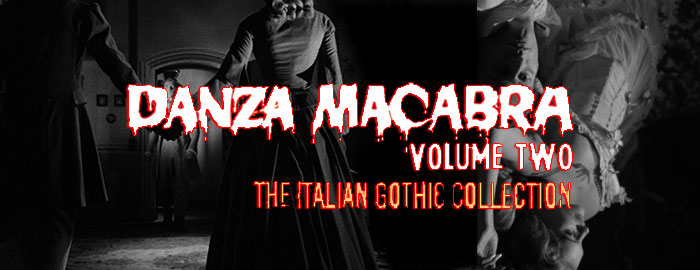
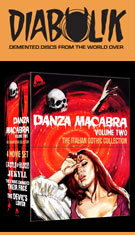

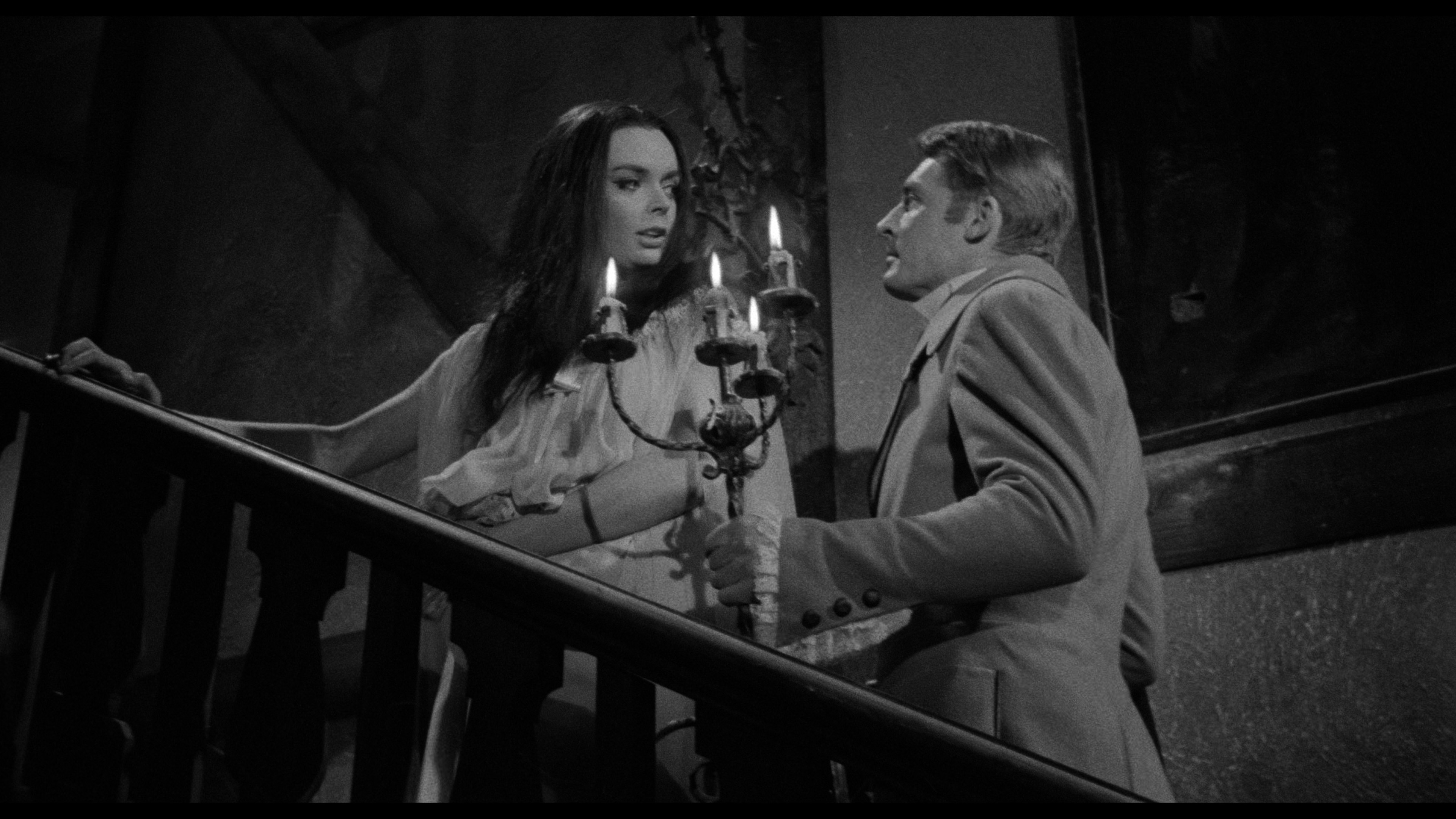 in Danza Macabra Volume Two: The Italian Gothic Collection, and this time all are worldwide HD premieres with the headliner getting a very welcome UHD
in Danza Macabra Volume Two: The Italian Gothic Collection, and this time all are worldwide HD premieres with the headliner getting a very welcome UHD  presentation to boot.
presentation to boot. mysteries and
mysteries and 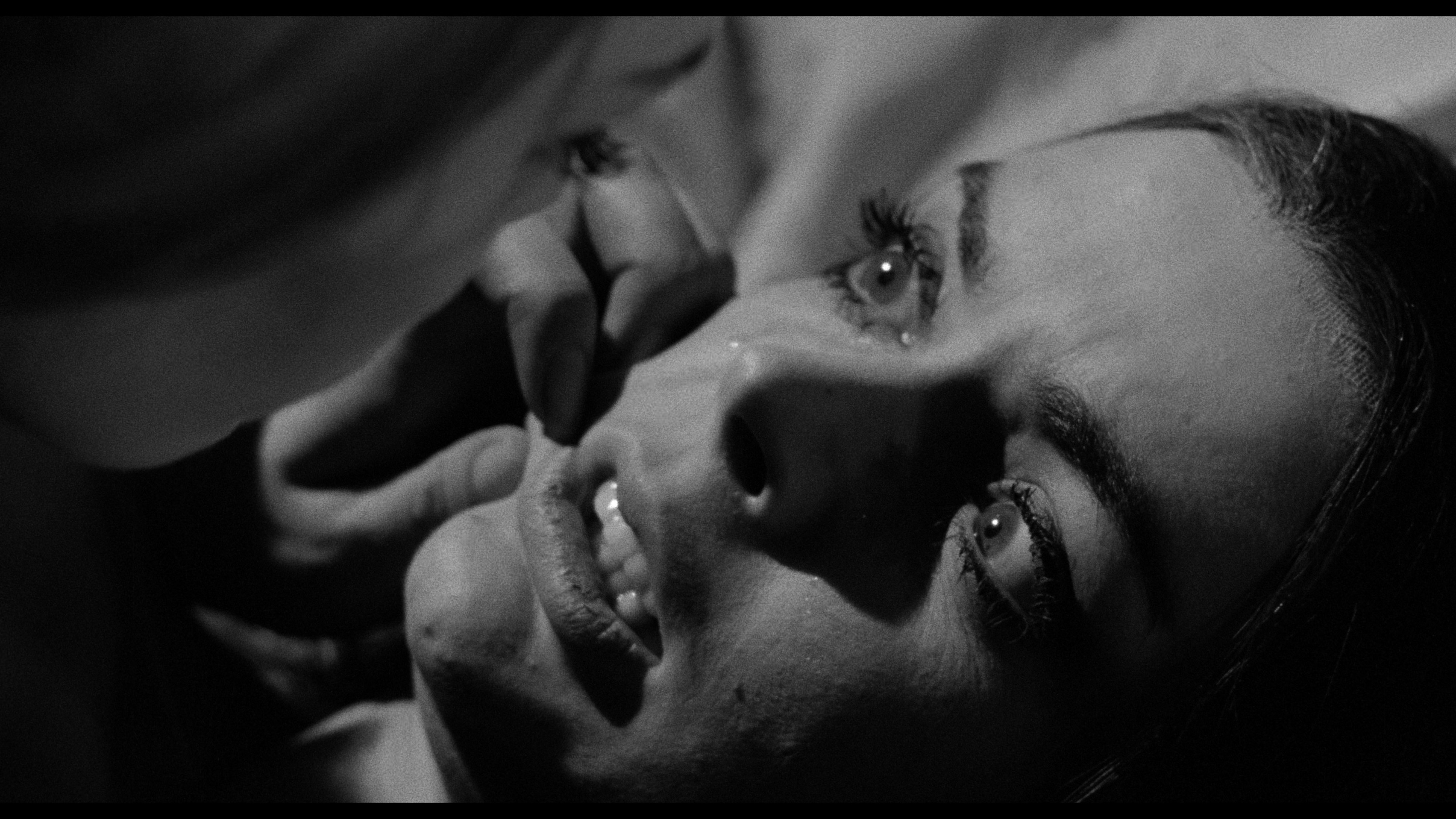 survive until dawn?
survive until dawn? 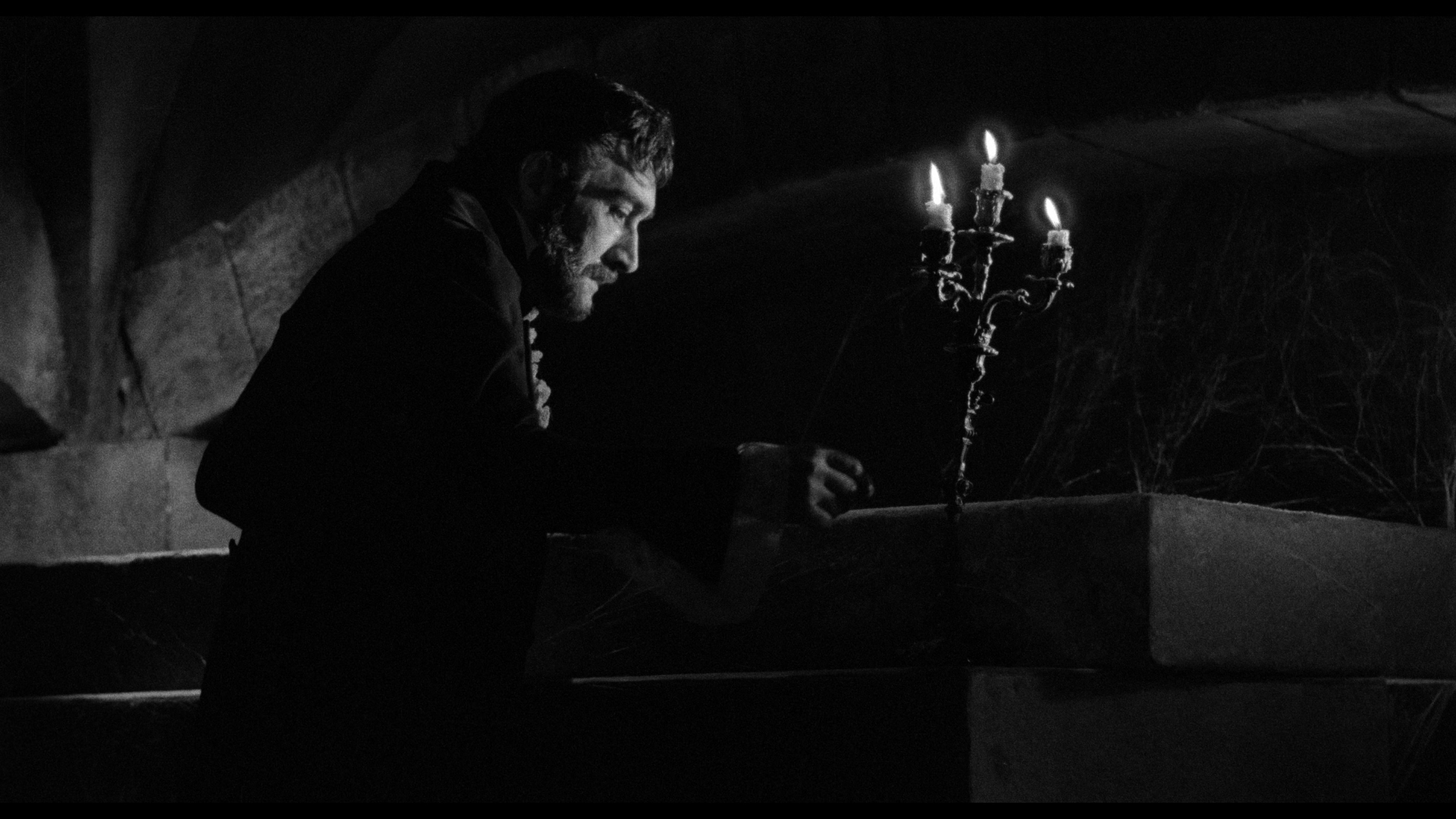 Woolner Brothers, made the film more family-friendly by trimming out most of a homoerotic murder scene between two women and a fairly brief topless bit by Sylvia Sorrente. Also scissored was a great deal of Poe's dialogue (including the bulk of his opening story) and a few other random lines here and there. Running 89m4s, Synapse's DVD from 2002 originates from the longest possible variant at the time, the French Danse Macabre print, with the English soundtrack married to the image wherever possible with occasional switches to
Woolner Brothers, made the film more family-friendly by trimming out most of a homoerotic murder scene between two women and a fairly brief topless bit by Sylvia Sorrente. Also scissored was a great deal of Poe's dialogue (including the bulk of his opening story) and a few other random lines here and there. Running 89m4s, Synapse's DVD from 2002 originates from the longest possible variant at the time, the French Danse Macabre print, with the English soundtrack married to the image wherever possible with occasional switches to 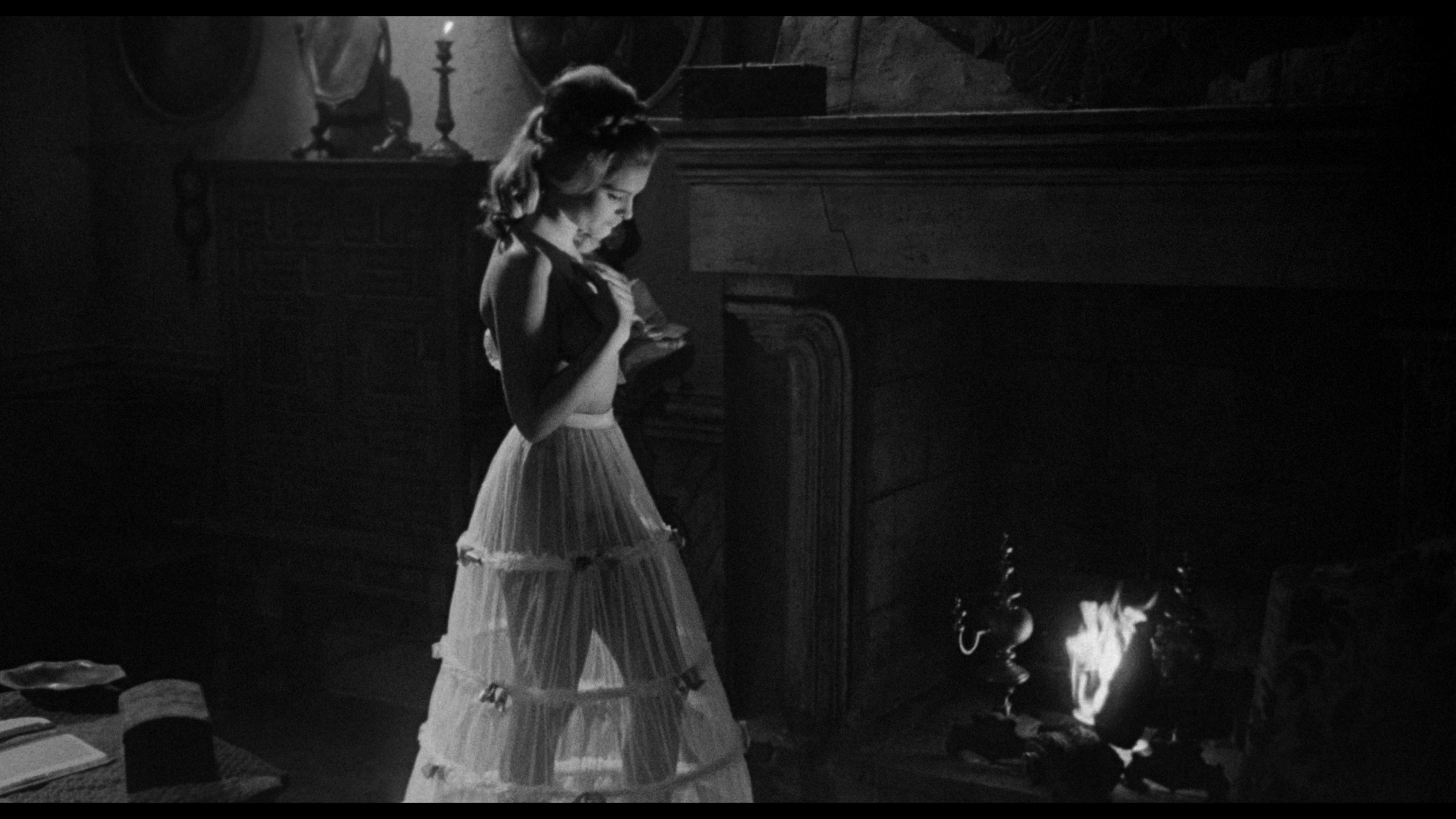 French with optional English subtitles. The entire French soundtrack can also be accessed (with no subtitles except for the restored footage). The anamorphic transfer from 35mm looked fine overall compared to its predecessors, though it's been outclassed by far since then. The print contains the original French opening titles, which contain a completely alternate set of names for most of the crew! Extras accessible from the elegantly designed menus include the alternate U.S. opening credit sequence (over a silhouette of the London cityscape), a gallery of rare photos and stills from the collection of the late Alan Upchurch, and the highly emphatic American trailer ("A night of horror!"), with Video Watchdog's Tim Lucas providing liner notes for the illustrated booklet.
The genuine Italian version of the film appeared on French DVD from SevenSpet in 2008, in French or Italian with optional French subtitles, and an HD transfer of the shorter American cut (82,27s) can also be found on Severin's 2015 Blu-ray of Nightmare Castle.
French with optional English subtitles. The entire French soundtrack can also be accessed (with no subtitles except for the restored footage). The anamorphic transfer from 35mm looked fine overall compared to its predecessors, though it's been outclassed by far since then. The print contains the original French opening titles, which contain a completely alternate set of names for most of the crew! Extras accessible from the elegantly designed menus include the alternate U.S. opening credit sequence (over a silhouette of the London cityscape), a gallery of rare photos and stills from the collection of the late Alan Upchurch, and the highly emphatic American trailer ("A night of horror!"), with Video Watchdog's Tim Lucas providing liner notes for the illustrated booklet.
The genuine Italian version of the film appeared on French DVD from SevenSpet in 2008, in French or Italian with optional French subtitles, and an HD transfer of the shorter American cut (82,27s) can also be found on Severin's 2015 Blu-ray of Nightmare Castle.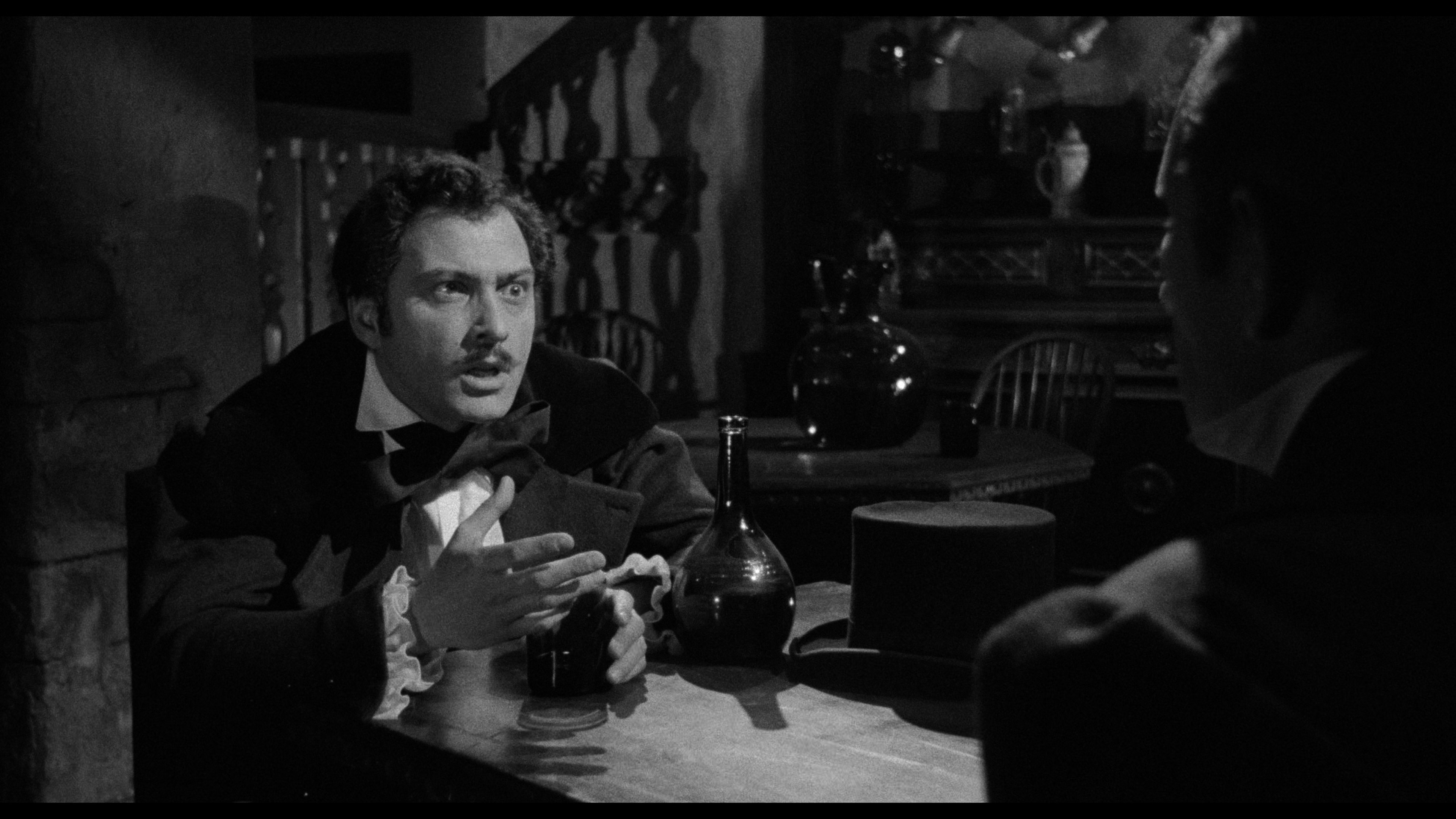
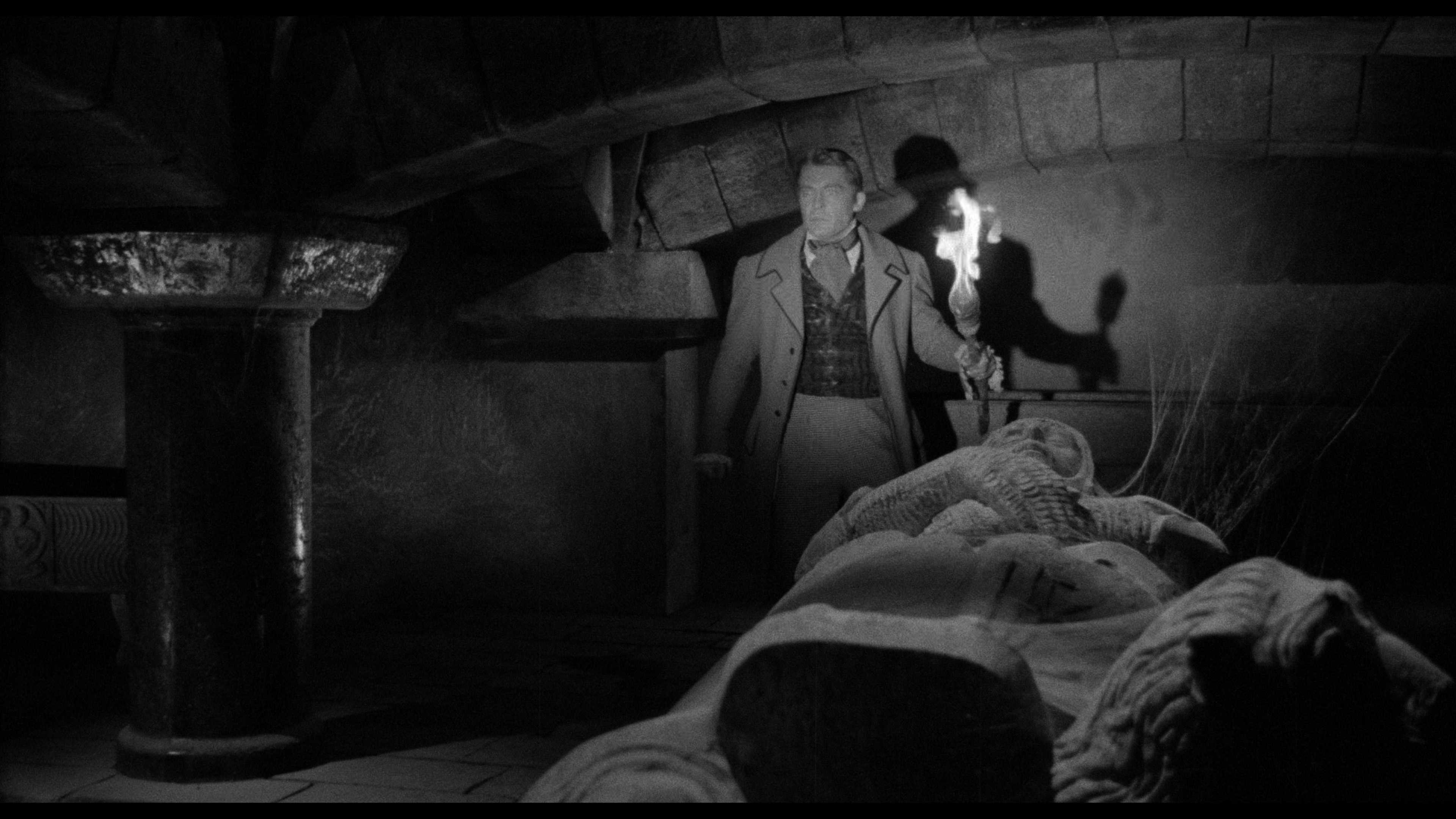 with optional English-translated subtitles, plus the option to watch it in English with the Italian slugged in for the missing bits with subtitles. The Castle of Blood cut is here as well, using the 4K restoration wherever possible and slugging in the U.S. credits and text inserts from the print used for the 2015 Blu-ray. Also included are the trailer and a TV spot, while the Danza Macabra cut comes with a new audio commentary by the NaschyCast's Rod Barnett and The Bloody Pit's Adrian Smith, who have a great time hitting all the highlights from this film's history including its reusing of sets from The Monk of Monza, Margheriti and Steele's careers to that point, and the involvement of Corbucci who came back to direct one sequence. The first Blu-ray is devoted to the Danza Macabra version with the commentary and a selected scene commentary with Steele and Russ Lanier (17m12s) featuring her positive comments about Margheriti (whom she compares favorably to Corman and Bava) and her dismissal of Margheriti's claim that it was shot using multiple cameras on the set, which was more common to TV at the time. It's especially worth a listen for her remark that Rivière was like "a better-looking Danny Kaye." Also on that disc is the incisive "Exploring the Castle Of Blood" (44m27s) with Stephen Thrower working out the chronology of the film's inception and belated release, its early use of the transgressive lesbian element that also turned up in Bava's Black Sabbath around the same time, the historical meaning of the film's title, the familiarity of the some of the set designs, and one shot that seems really dicey by standards of the time. The second Blu-ray features the Castle of Blood U.S. cut, the trailer, a TV spot, and four featurettes starting with "The Director Who Didn't Like Blood" (13m44s) with Edoardo Margheriti, the director's son, analyzing his dad's fondness for this film, his preference for Gothic stories versus explicit violence, his relationship with Steele on the set, and some other projects realized and unrealized scattered throughout his career. In "Enigmatic Elegance: Unveiling the Haunting Legacy of Barbara Steel in the Italian Gothic" (30m35s), Rachael Nisbet balances the bio highlights of Steele's career with a study of her unique screen presence and her unique aspects that made her an icon of the macabre as well as a repeat star for directors like Margheriti and Riccardo Freda. "Return to the Castle" (22m23s) features Alberto Farina guiding you on a
with optional English-translated subtitles, plus the option to watch it in English with the Italian slugged in for the missing bits with subtitles. The Castle of Blood cut is here as well, using the 4K restoration wherever possible and slugging in the U.S. credits and text inserts from the print used for the 2015 Blu-ray. Also included are the trailer and a TV spot, while the Danza Macabra cut comes with a new audio commentary by the NaschyCast's Rod Barnett and The Bloody Pit's Adrian Smith, who have a great time hitting all the highlights from this film's history including its reusing of sets from The Monk of Monza, Margheriti and Steele's careers to that point, and the involvement of Corbucci who came back to direct one sequence. The first Blu-ray is devoted to the Danza Macabra version with the commentary and a selected scene commentary with Steele and Russ Lanier (17m12s) featuring her positive comments about Margheriti (whom she compares favorably to Corman and Bava) and her dismissal of Margheriti's claim that it was shot using multiple cameras on the set, which was more common to TV at the time. It's especially worth a listen for her remark that Rivière was like "a better-looking Danny Kaye." Also on that disc is the incisive "Exploring the Castle Of Blood" (44m27s) with Stephen Thrower working out the chronology of the film's inception and belated release, its early use of the transgressive lesbian element that also turned up in Bava's Black Sabbath around the same time, the historical meaning of the film's title, the familiarity of the some of the set designs, and one shot that seems really dicey by standards of the time. The second Blu-ray features the Castle of Blood U.S. cut, the trailer, a TV spot, and four featurettes starting with "The Director Who Didn't Like Blood" (13m44s) with Edoardo Margheriti, the director's son, analyzing his dad's fondness for this film, his preference for Gothic stories versus explicit violence, his relationship with Steele on the set, and some other projects realized and unrealized scattered throughout his career. In "Enigmatic Elegance: Unveiling the Haunting Legacy of Barbara Steel in the Italian Gothic" (30m35s), Rachael Nisbet balances the bio highlights of Steele's career with a study of her unique screen presence and her unique aspects that made her an icon of the macabre as well as a repeat star for directors like Margheriti and Riccardo Freda. "Return to the Castle" (22m23s) features Alberto Farina guiding you on a 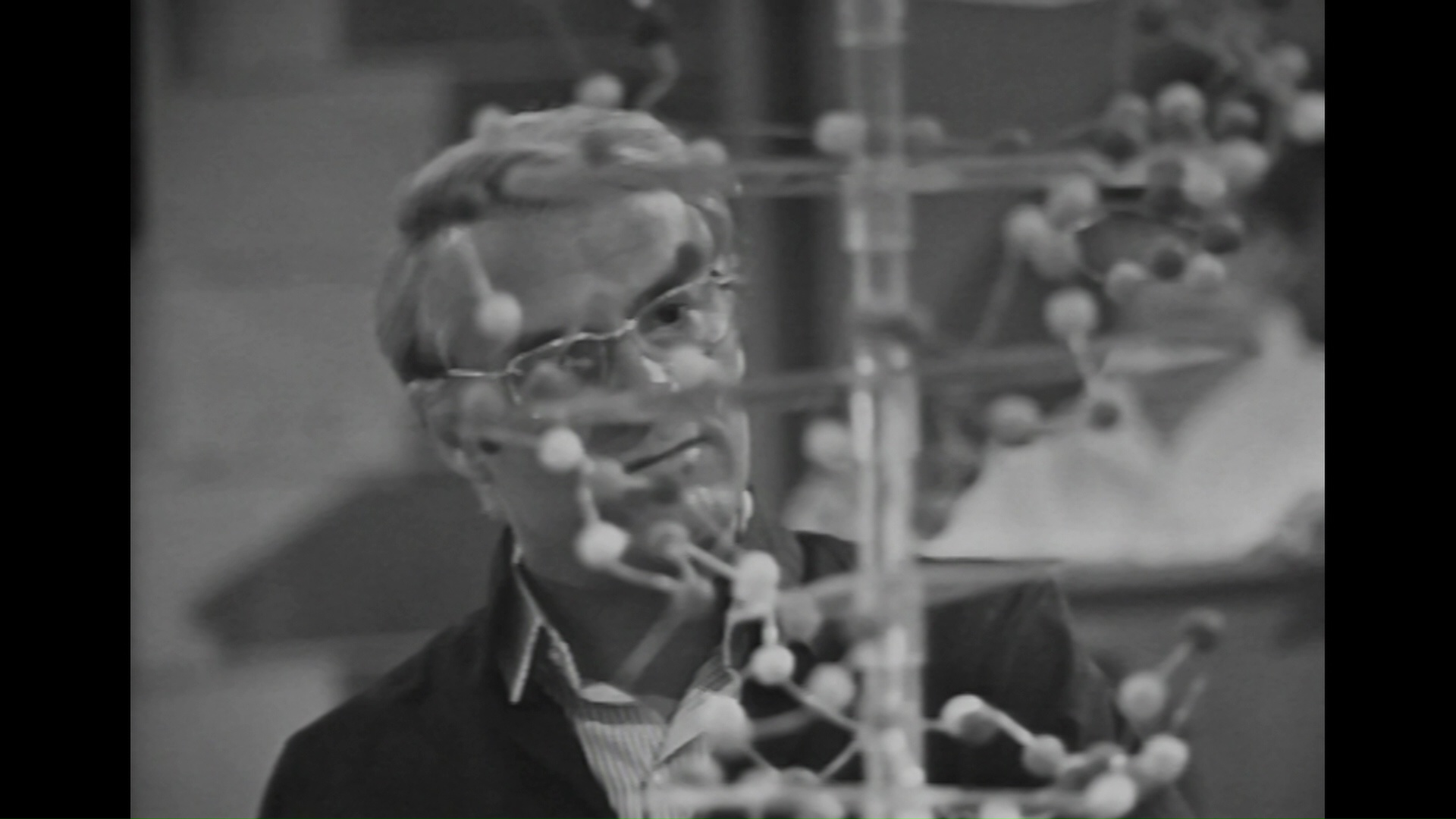 tour of the actual location in Bolsena, Italy used for the exterior shots -- and it's a fascinating history unto itself. Finally you get an archival 5m10s interview with Margheriti
tour of the actual location in Bolsena, Italy used for the exterior shots -- and it's a fascinating history unto itself. Finally you get an archival 5m10s interview with Margheriti 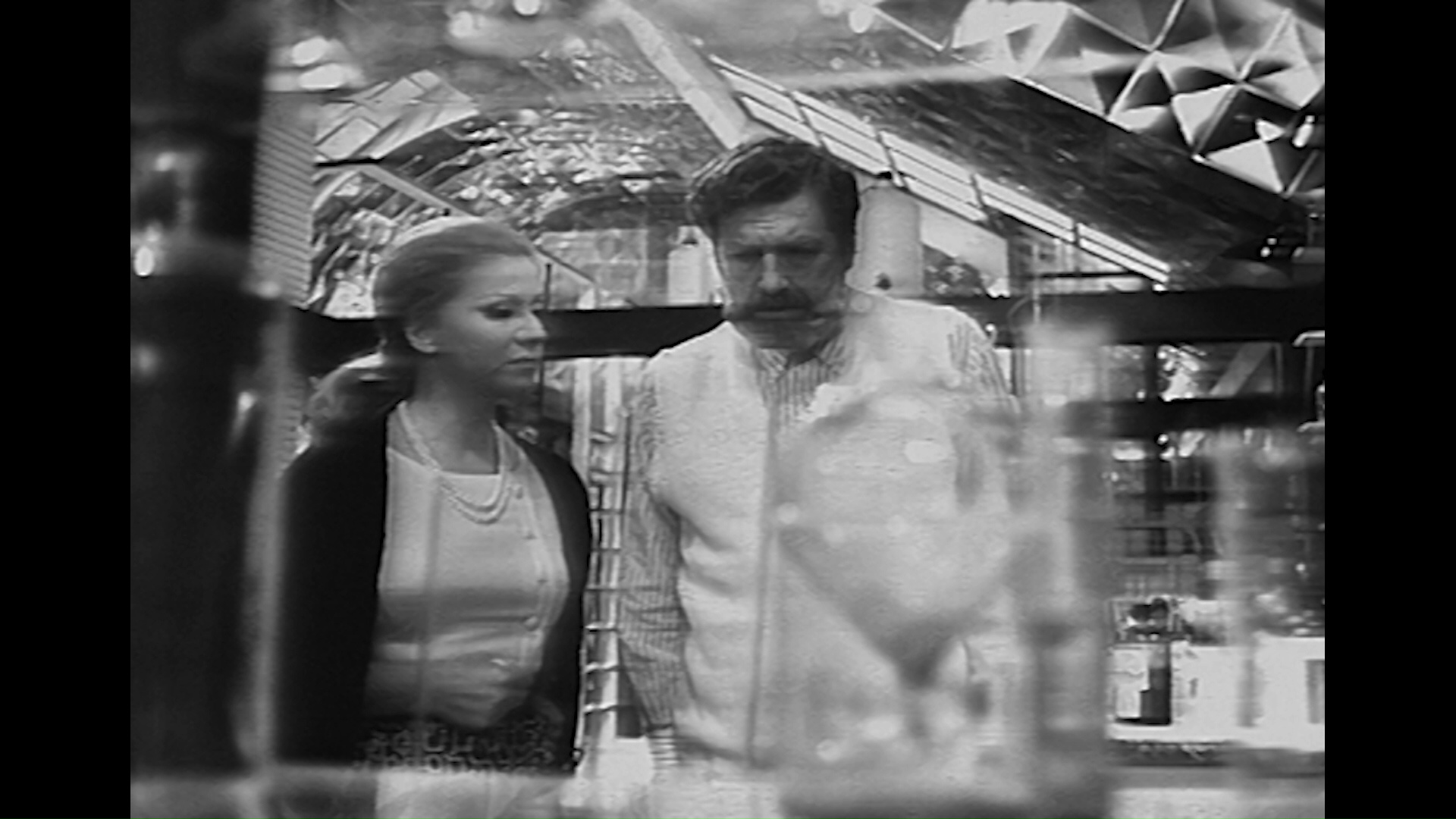 by Peter Blumenstock looking back at his pleasant memories of the film and working with Steele (including that possibly apocryphal story about her freaking out while making Black Sunday).
by Peter Blumenstock looking back at his pleasant memories of the film and working with Steele (including that possibly apocryphal story about her freaking out while making Black Sunday). 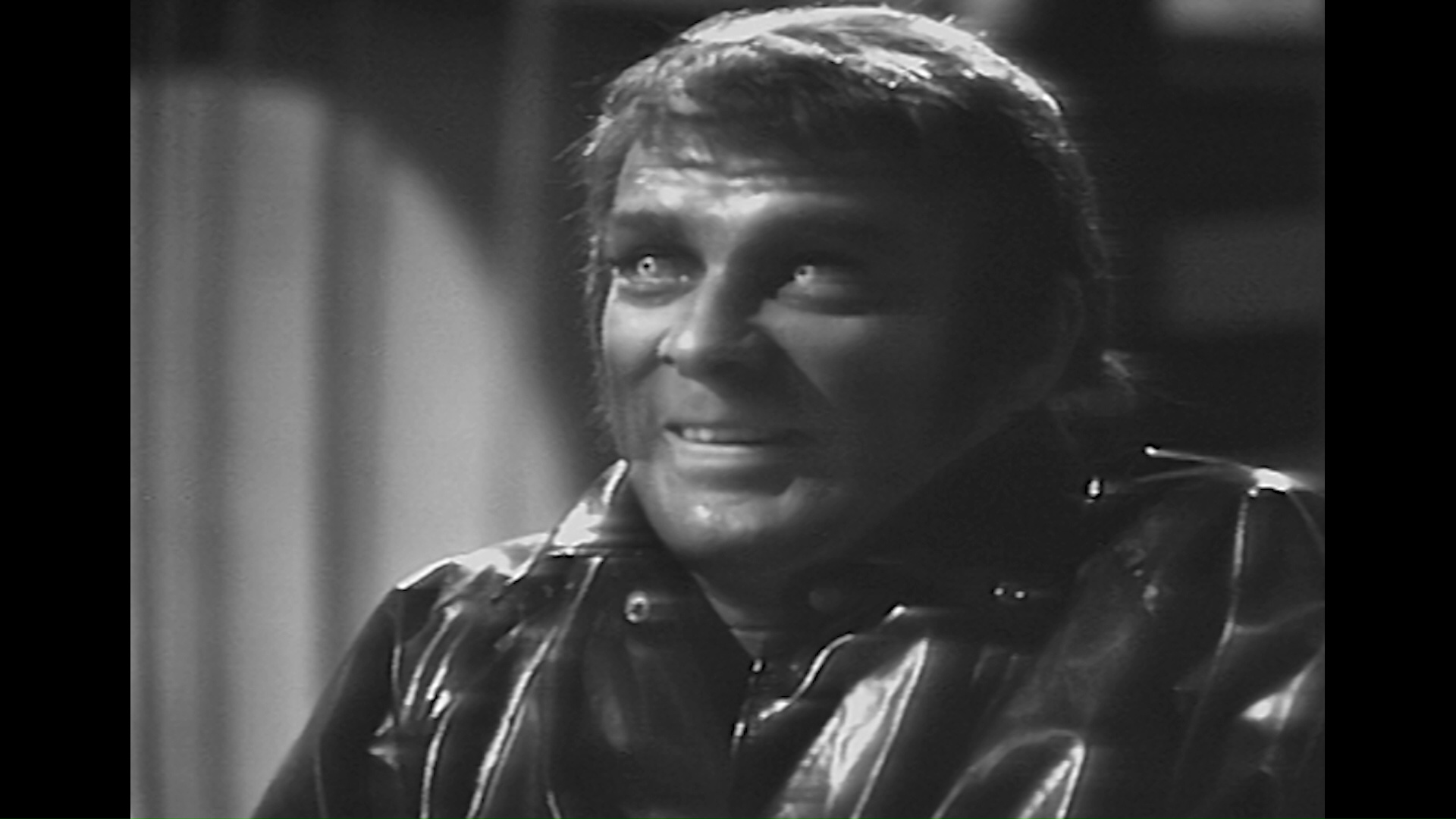 the previous year's U.S. TV version produced by Dan Curtis and starring Jack Palance (and preceded the bizarre 1973 made-for-TV
the previous year's U.S. TV version produced by Dan Curtis and starring Jack Palance (and preceded the bizarre 1973 made-for-TV 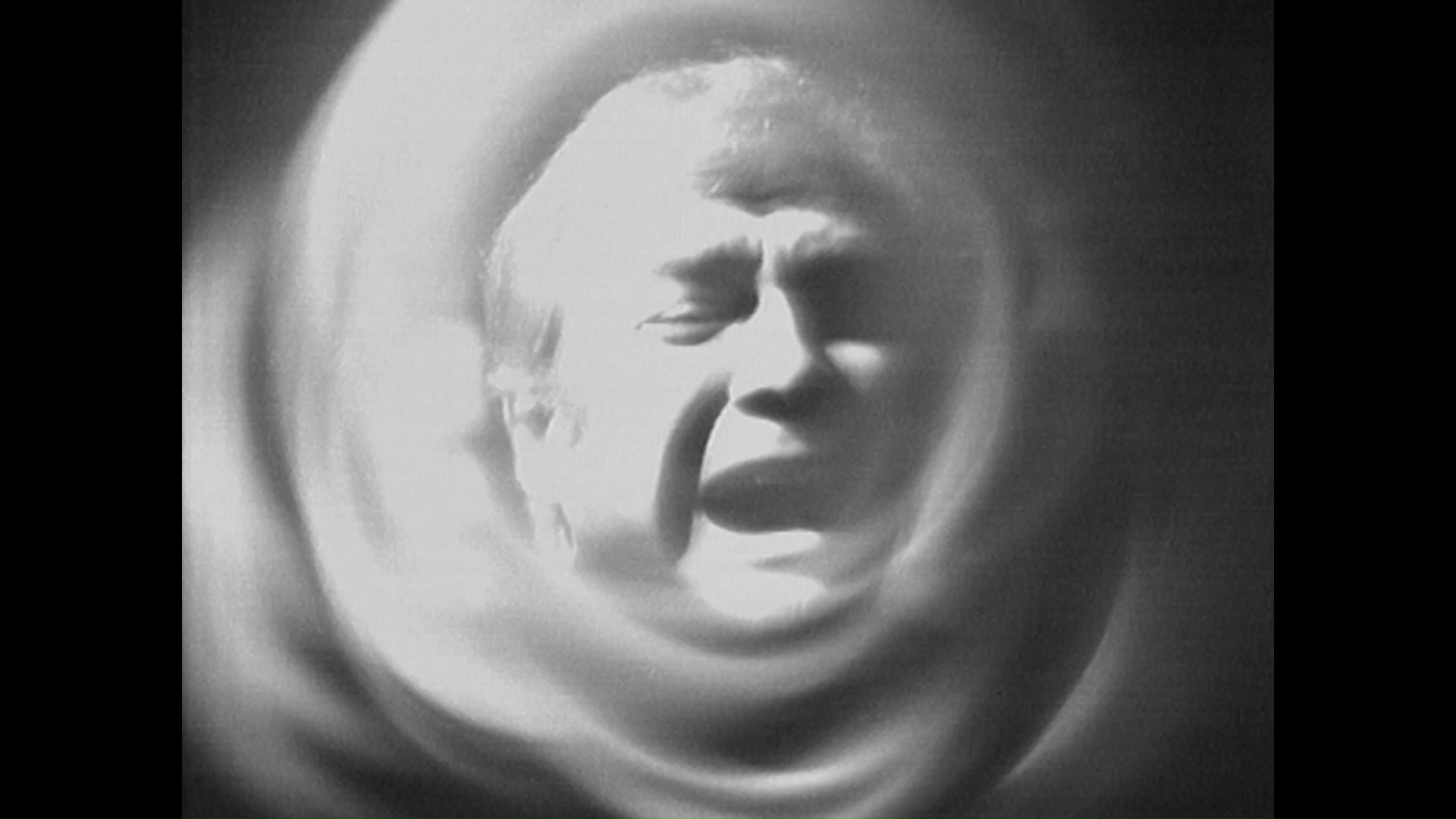 musical one with Kirk Douglas). Here the story unfolds as a mystery through the eyes of attorney John Utterson (Girotti) who traces an attack on a young girl to Edward Hyde, the man named as the beneficiary to respected biologist Henry Jekyll-- who handed a hefty check to the victim's father to hush it up. As Utterson and the police are confronted with more violence, the relationship between Jekyll and Hyde becomes even more puzzling given the former's extensive, secret DNA experiments...
musical one with Kirk Douglas). Here the story unfolds as a mystery through the eyes of attorney John Utterson (Girotti) who traces an attack on a young girl to Edward Hyde, the man named as the beneficiary to respected biologist Henry Jekyll-- who handed a hefty check to the victim's father to hush it up. As Utterson and the police are confronted with more violence, the relationship between Jekyll and Hyde becomes even more puzzling given the former's extensive, secret DNA experiments...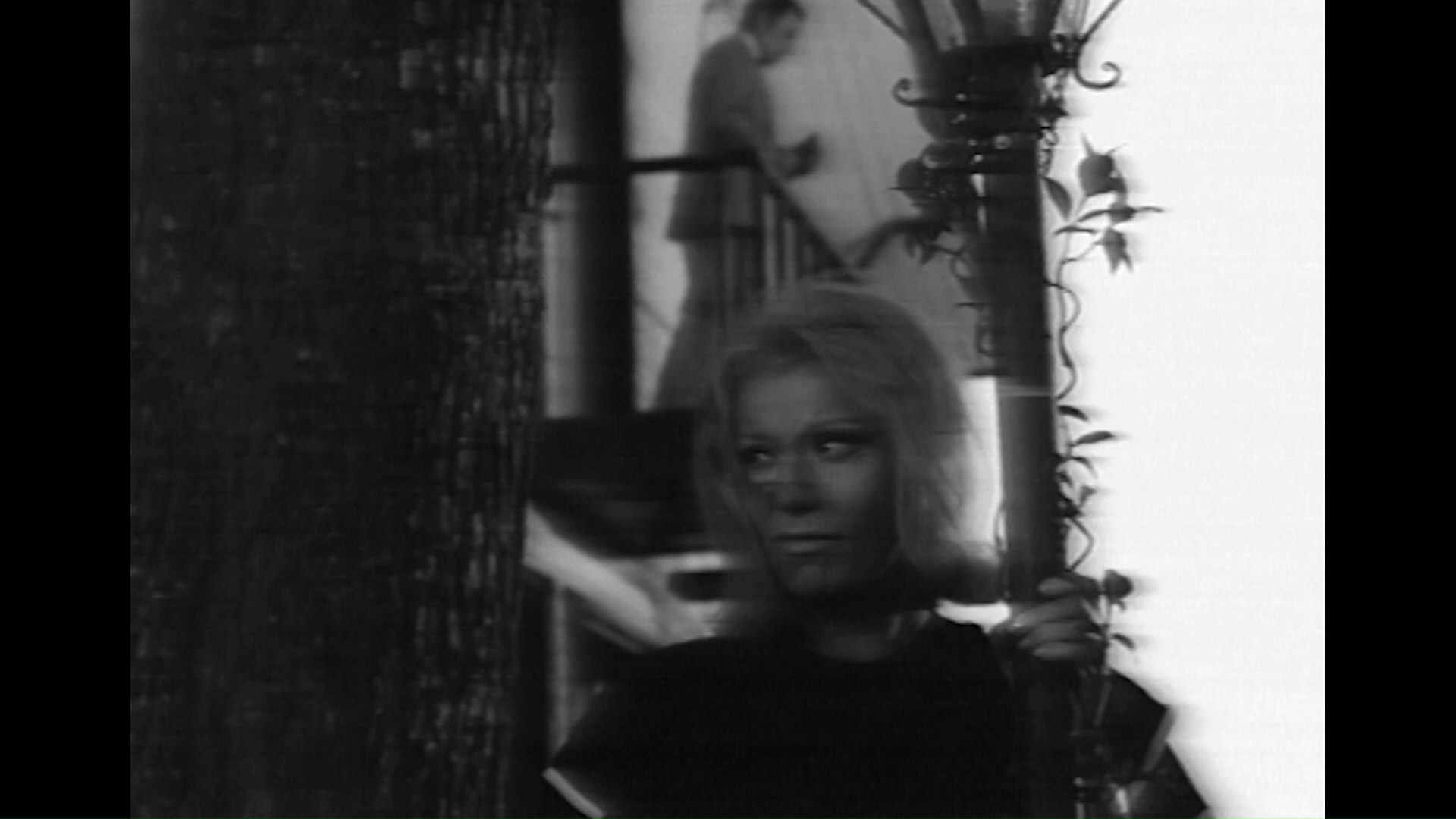 Blu-ray
Blu-ray 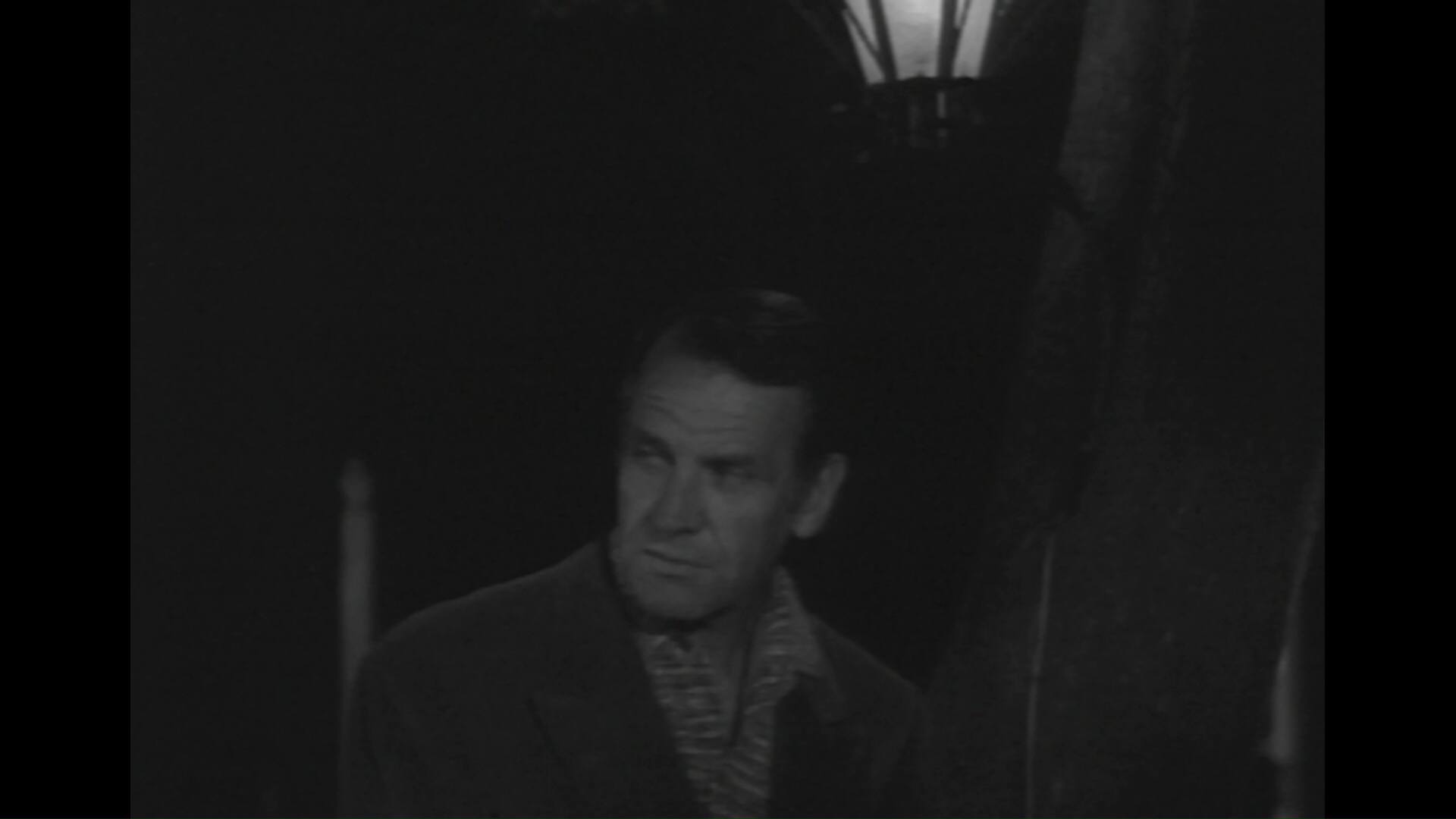 with all the limitations that implies. It looks like videotape, of course, including some analog damage in a few spots, but there's no way this could look any better -- and having it subtitled as good as it can be is a cause for rejoicing. The three extras for this one (spread across the two discs) start with "Dr. Jekyll And Mr. Albertazzi" (7m24s), an interview with actor Giuliano Disperati about the director-star's dedication to the source material, the nature of Italian TV production at the time (including the fact that black-and-white was still the standard there at the time), and the unorthodox approach to a story that had already been told many times. "Building the World of Jekyll" (9m13s) features set designer Emanuele Taglietti explaining the often resourceful approach to creating the environments seen in the production, including the very mod lab and that incredible medical classroom that looks like something out of Barbarella. Finally "The Double Spiral Staircase of Jekyll and Hyde" (14m42s) is a video essay by Joseph Dwyer providing a fascinating examination of the story's topical concerns and existential terror that remained unfiltered when brought to the present day in this adaptation, a stark contrast to what was being made for the big screen at the same time.
with all the limitations that implies. It looks like videotape, of course, including some analog damage in a few spots, but there's no way this could look any better -- and having it subtitled as good as it can be is a cause for rejoicing. The three extras for this one (spread across the two discs) start with "Dr. Jekyll And Mr. Albertazzi" (7m24s), an interview with actor Giuliano Disperati about the director-star's dedication to the source material, the nature of Italian TV production at the time (including the fact that black-and-white was still the standard there at the time), and the unorthodox approach to a story that had already been told many times. "Building the World of Jekyll" (9m13s) features set designer Emanuele Taglietti explaining the often resourceful approach to creating the environments seen in the production, including the very mod lab and that incredible medical classroom that looks like something out of Barbarella. Finally "The Double Spiral Staircase of Jekyll and Hyde" (14m42s) is a video essay by Joseph Dwyer providing a fascinating examination of the story's topical concerns and existential terror that remained unfiltered when brought to the present day in this adaptation, a stark contrast to what was being made for the big screen at the same time.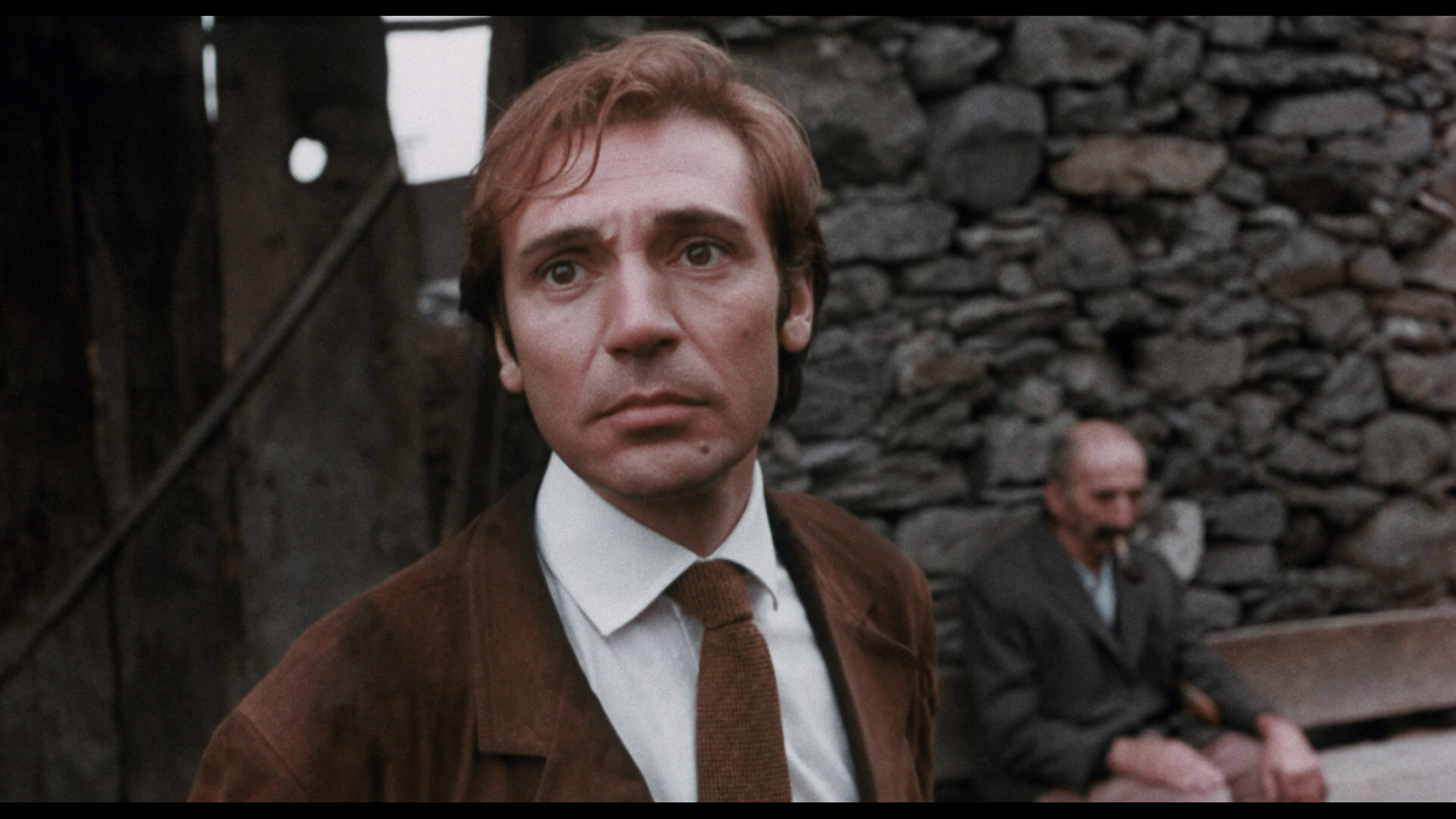 Mentioned in horror reference books far more often than actually seen, 1971's They Have Changed Their Face (...Hanno cambiato faccia) belongs to that odd subset of vampire films that double as sociological critiques a la Jonathan, Thirst, and Ferat Vampire. This was the first of only
Mentioned in horror reference books far more often than actually seen, 1971's They Have Changed Their Face (...Hanno cambiato faccia) belongs to that odd subset of vampire films that double as sociological critiques a la Jonathan, Thirst, and Ferat Vampire. This was the first of only 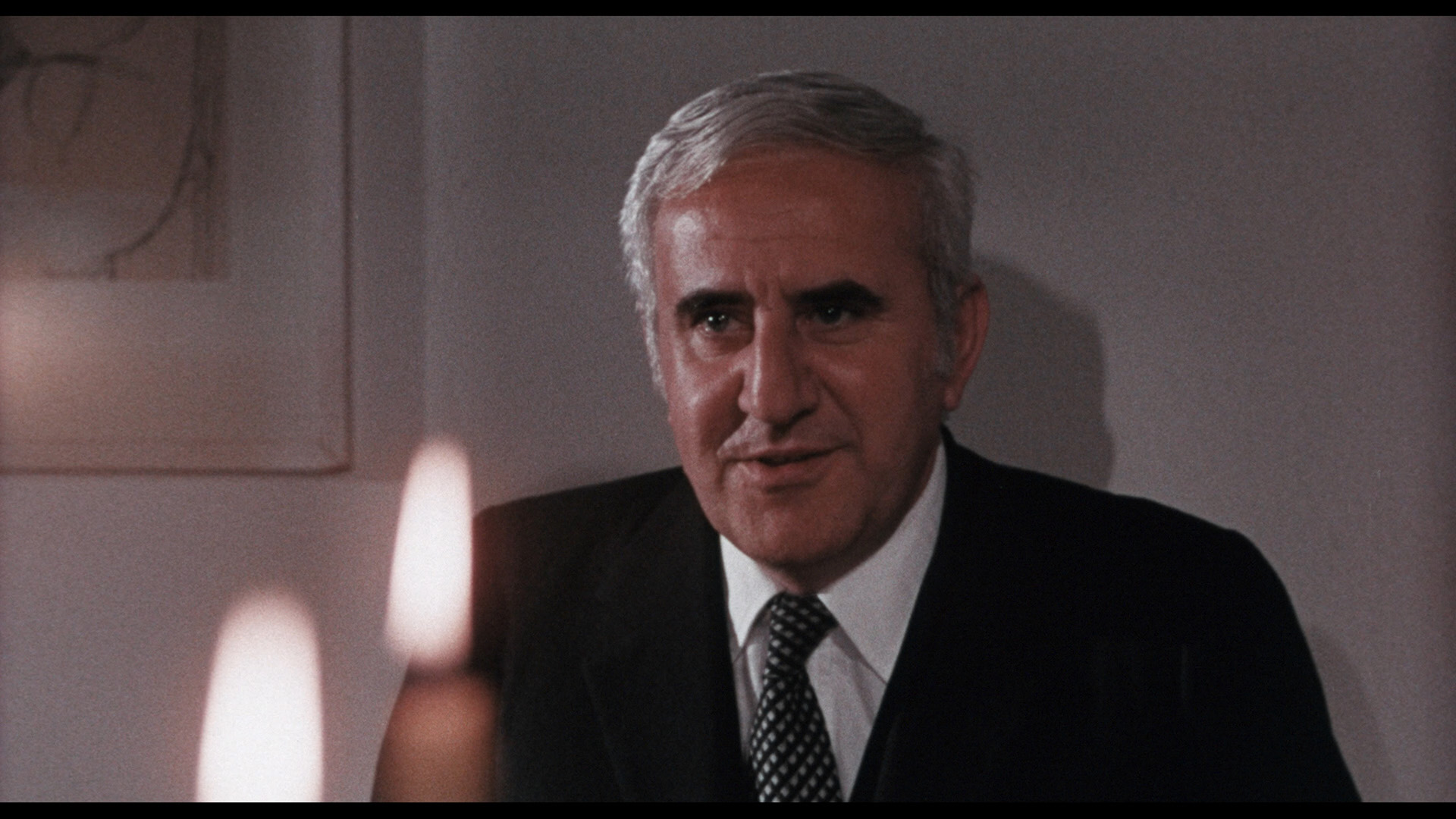 two features directed by Corrado Farina, a writer and filmmaker who cut his teeth on commercials and documentary shorts but made his biggest international impression with 1973's delirious Baba Yaga, adapted from the popular Valentina adult comic books. Both of his films were scored with preexisting music, in this case using highlights from Amedeo Tomassi's music for Pupi Avati's rarely seen Thomas (including a great theme also repurposed by Radley Metzger to excellent effect in Score). Presented on the sixth disc in the set, this is the first legit appearance of the film in the U.S. in any format and its first time with English subtitles outside of the gray market.
two features directed by Corrado Farina, a writer and filmmaker who cut his teeth on commercials and documentary shorts but made his biggest international impression with 1973's delirious Baba Yaga, adapted from the popular Valentina adult comic books. Both of his films were scored with preexisting music, in this case using highlights from Amedeo Tomassi's music for Pupi Avati's rarely seen Thomas (including a great theme also repurposed by Radley Metzger to excellent effect in Score). Presented on the sixth disc in the set, this is the first legit appearance of the film in the U.S. in any format and its first time with English subtitles outside of the gray market. 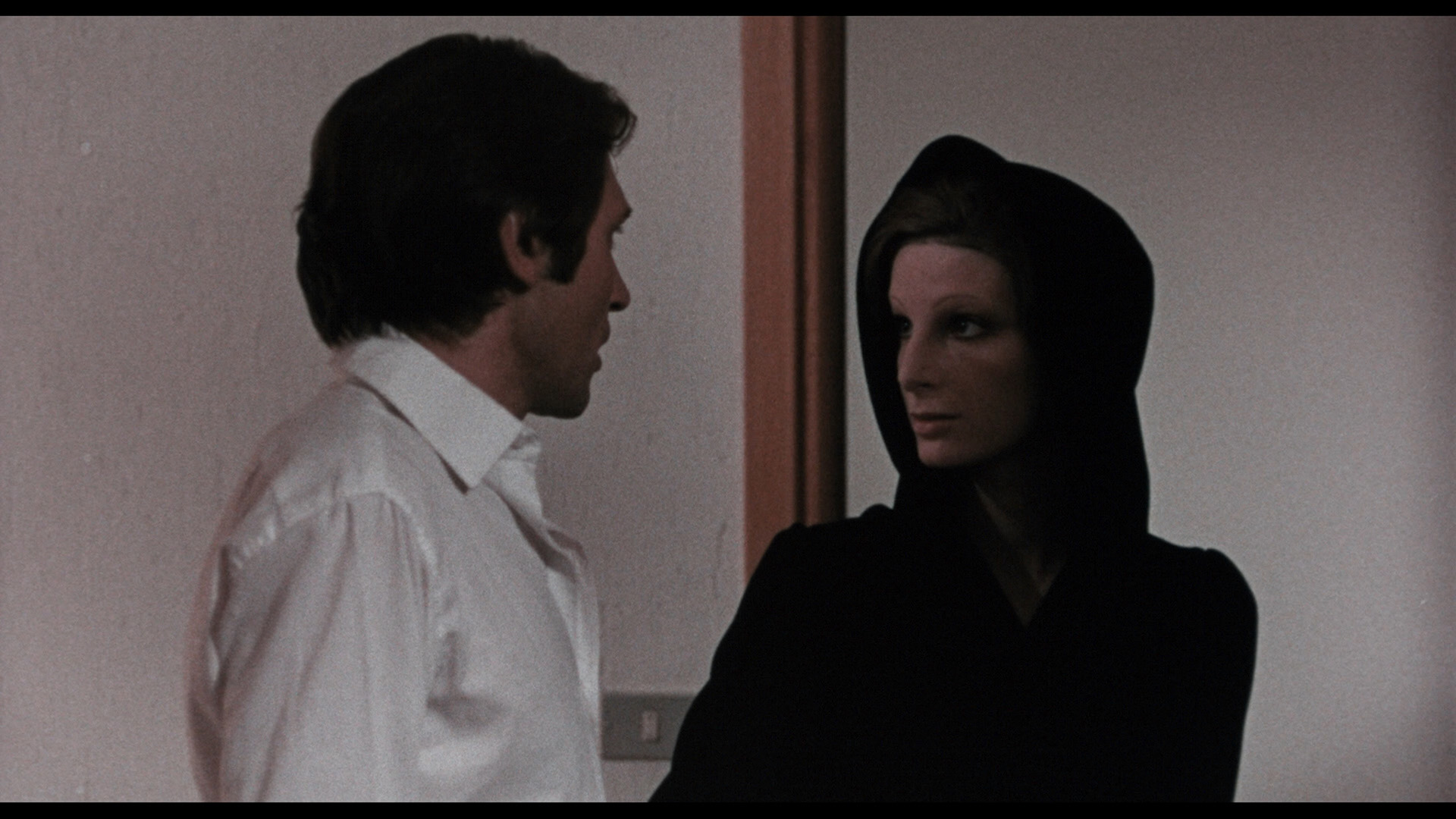 Very out of step with standard Italian genre fare around that time (especially given the flood of gialli coming out), They Have Changed Their
Very out of step with standard Italian genre fare around that time (especially given the flood of gialli coming out), They Have Changed Their 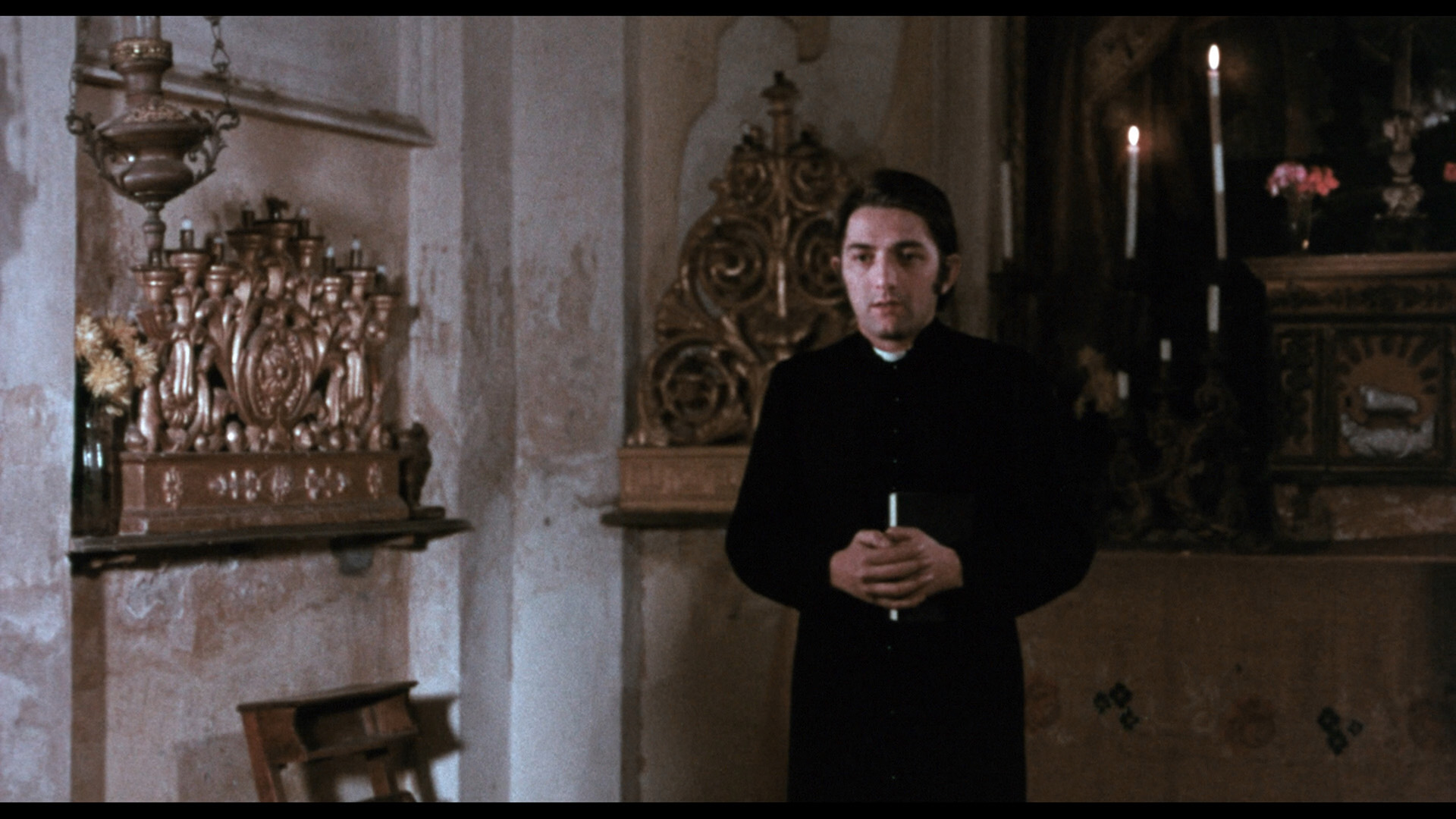 Face playfully adapts the aristocratic vampire concept of Dracula to modern corporate predators to fine effect with a result that alternates between the humorous and the spooky. The actual horror content is quite low, but it's impossible to watch this without bearing in mind the unethical and obscenely rich raiders of the 21st century whose willingness to inflict massive harm on the populace is already skewered quite effectively here. That's also where Farina's advertising background comes in handy as a diabolical board meeting leads to some Putney Swope-style jabs at TV commercials for good measure.
Face playfully adapts the aristocratic vampire concept of Dracula to modern corporate predators to fine effect with a result that alternates between the humorous and the spooky. The actual horror content is quite low, but it's impossible to watch this without bearing in mind the unethical and obscenely rich raiders of the 21st century whose willingness to inflict massive harm on the populace is already skewered quite effectively here. That's also where Farina's advertising background comes in handy as a diabolical board meeting leads to some Putney Swope-style jabs at TV commercials for good measure.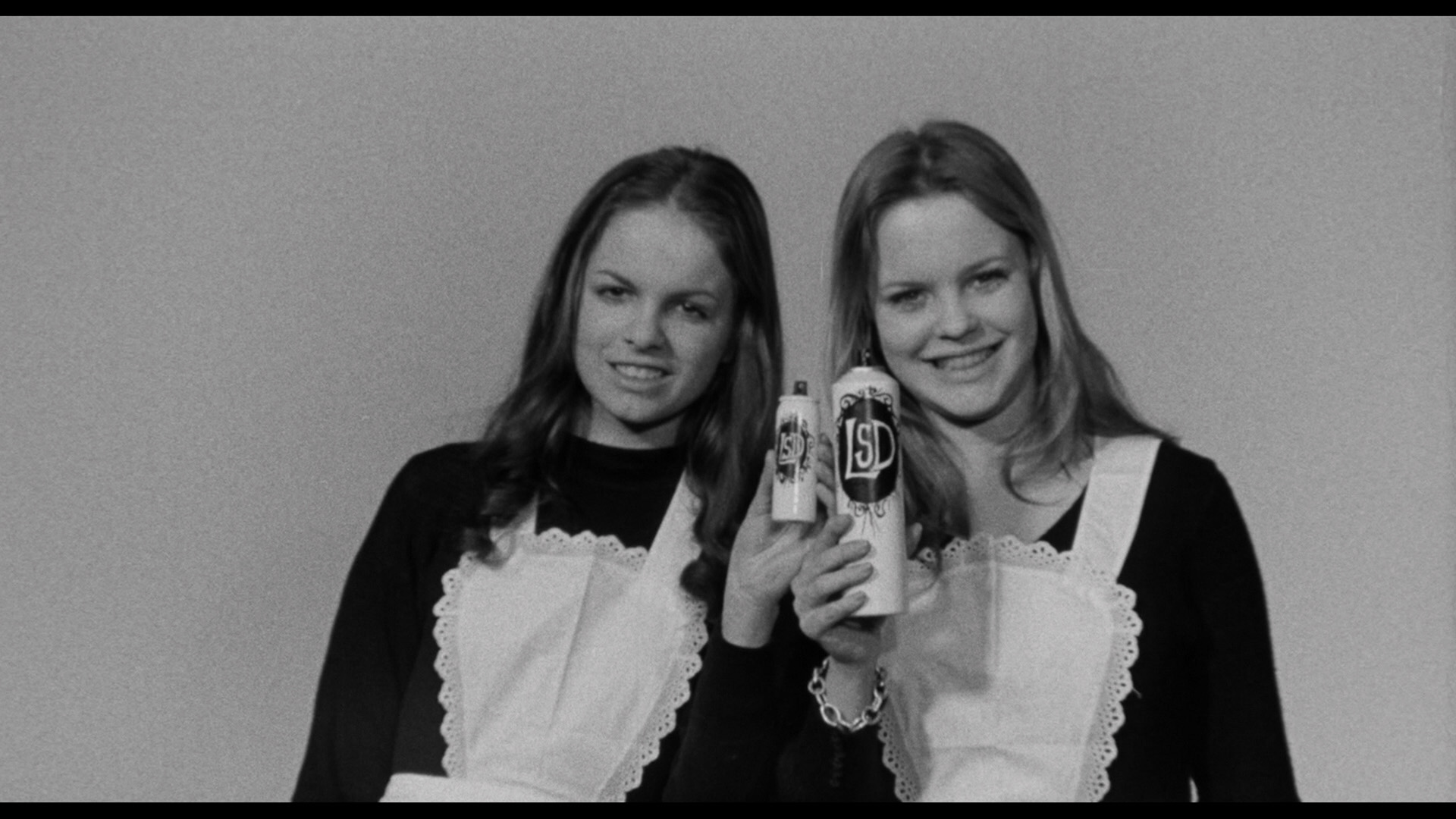 in Italian with subtitles as well.) A second, new audio commentary by Kat Ellinger goes headlong into the film's depiction of class exploitation and tensions, the use of Gothic trappings, her own initiation into vampire movies via
in Italian with subtitles as well.) A second, new audio commentary by Kat Ellinger goes headlong into the film's depiction of class exploitation and tensions, the use of Gothic trappings, her own initiation into vampire movies via 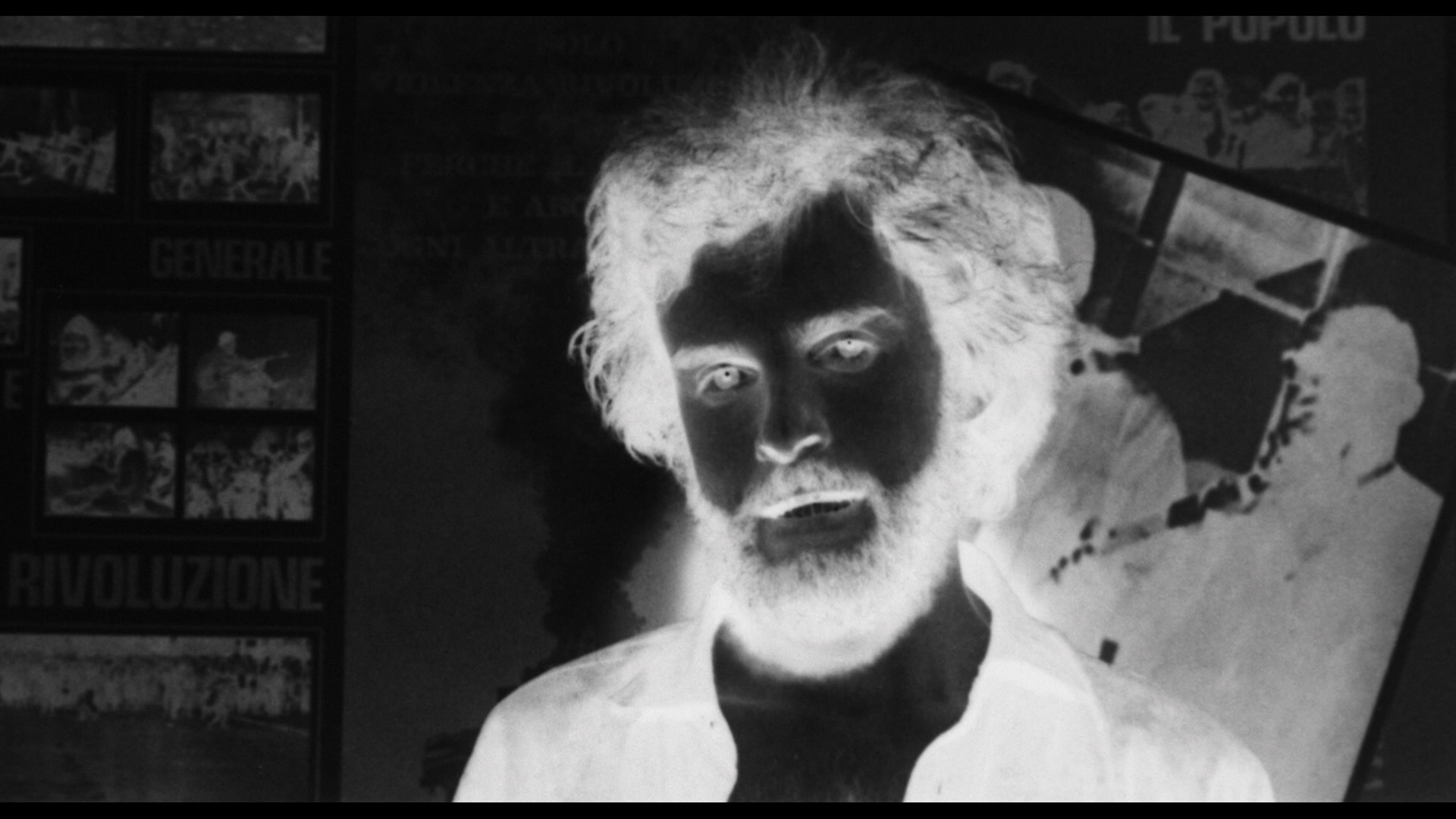 Hollywood, and lots more. Alberto Farina turns up again for "The Farina Method" (43m14s), an extensive chat about his father's life and work including lots of family photos and tidbits as well as info about other artistic pursuits well beyond filmmaking. The very lighthearted "Bloodsucking Capitalists" (30m59s) features Disperati and editor/screenwriter Giulio Berruti clearly having a good time looking back at their time together on the film, including fond comments about the director's invigorating approach and the freedom to break away from cinematic norms with the creation of the narrative and the main character. An interesting batch of "outtakes of De Sade" (6m14s) features the entire reel of footage shot for a throwaway bit in the film, with a note explaining its remarkable recovery in an unexpected place. Then you get a trio of Farina short films: the Gothic romantic comedy Il figlio di Dracula (The Son of Dracula) (20m34s), the marital satire / horror spoof Giro Giro Tondo (Ring Around the Rosie) (11m14s), and the plotess, expressionistic Il cantico delle creature (The Canticle of the Creatures) (5m16s). Listed as Praised Be My Lord on the specs but unnamed on the menu is a short of documentary in mini pieces (84m16s) by Farina using a melange of comic strips, found footage, urban snapshots, a look at the Hermitage, and other digressions contrasting the sacred with pop culture. Finally the disc wraps up
Hollywood, and lots more. Alberto Farina turns up again for "The Farina Method" (43m14s), an extensive chat about his father's life and work including lots of family photos and tidbits as well as info about other artistic pursuits well beyond filmmaking. The very lighthearted "Bloodsucking Capitalists" (30m59s) features Disperati and editor/screenwriter Giulio Berruti clearly having a good time looking back at their time together on the film, including fond comments about the director's invigorating approach and the freedom to break away from cinematic norms with the creation of the narrative and the main character. An interesting batch of "outtakes of De Sade" (6m14s) features the entire reel of footage shot for a throwaway bit in the film, with a note explaining its remarkable recovery in an unexpected place. Then you get a trio of Farina short films: the Gothic romantic comedy Il figlio di Dracula (The Son of Dracula) (20m34s), the marital satire / horror spoof Giro Giro Tondo (Ring Around the Rosie) (11m14s), and the plotess, expressionistic Il cantico delle creature (The Canticle of the Creatures) (5m16s). Listed as Praised Be My Lord on the specs but unnamed on the menu is a short of documentary in mini pieces (84m16s) by Farina using a melange of comic strips, found footage, urban snapshots, a look at the Hermitage, and other digressions contrasting the sacred with pop culture. Finally the disc wraps up 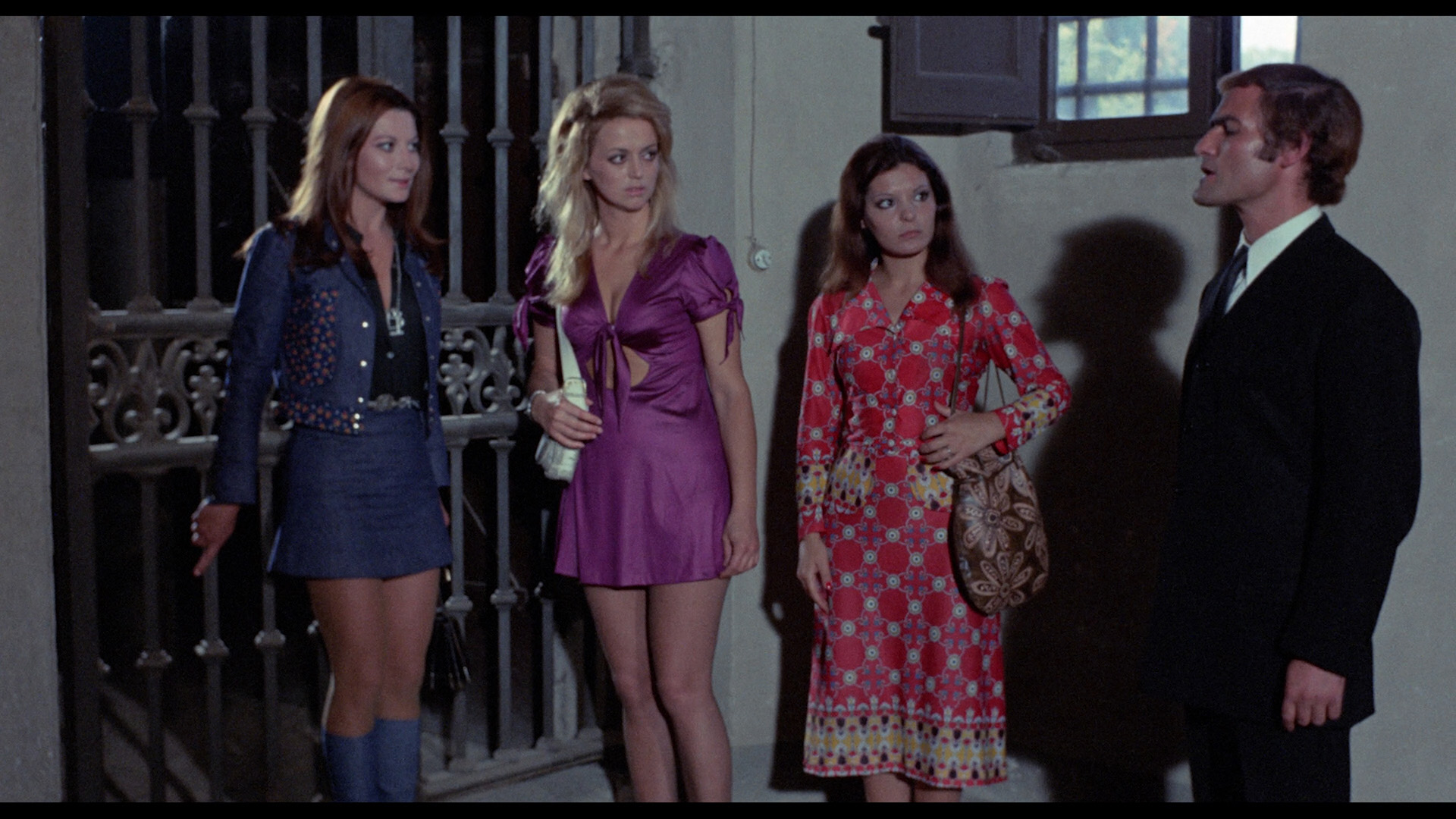 with a reel of Farina-directed commercials (9m32s) with lots and lots of
with a reel of Farina-directed commercials (9m32s) with lots and lots of 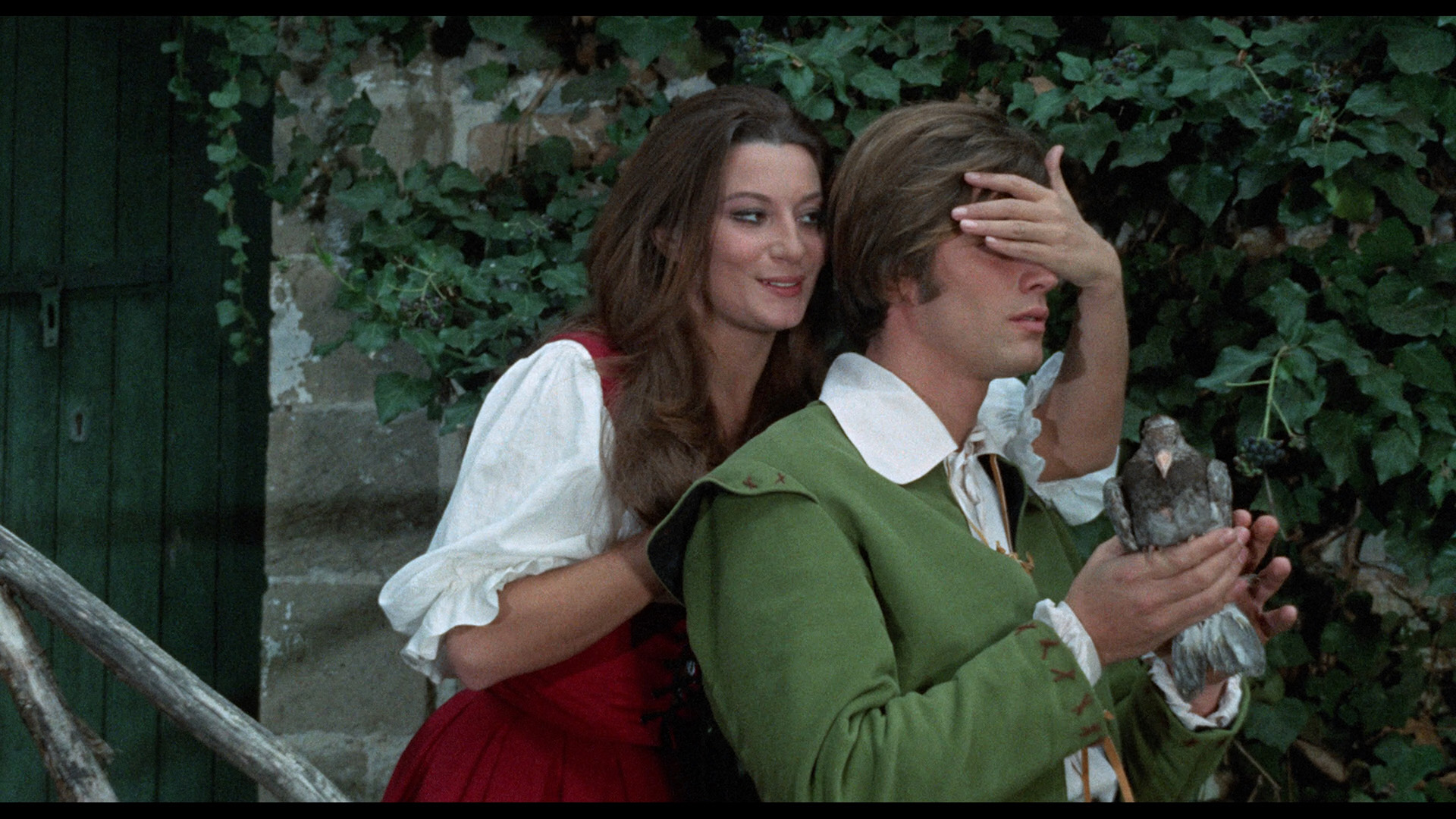 babies.
babies.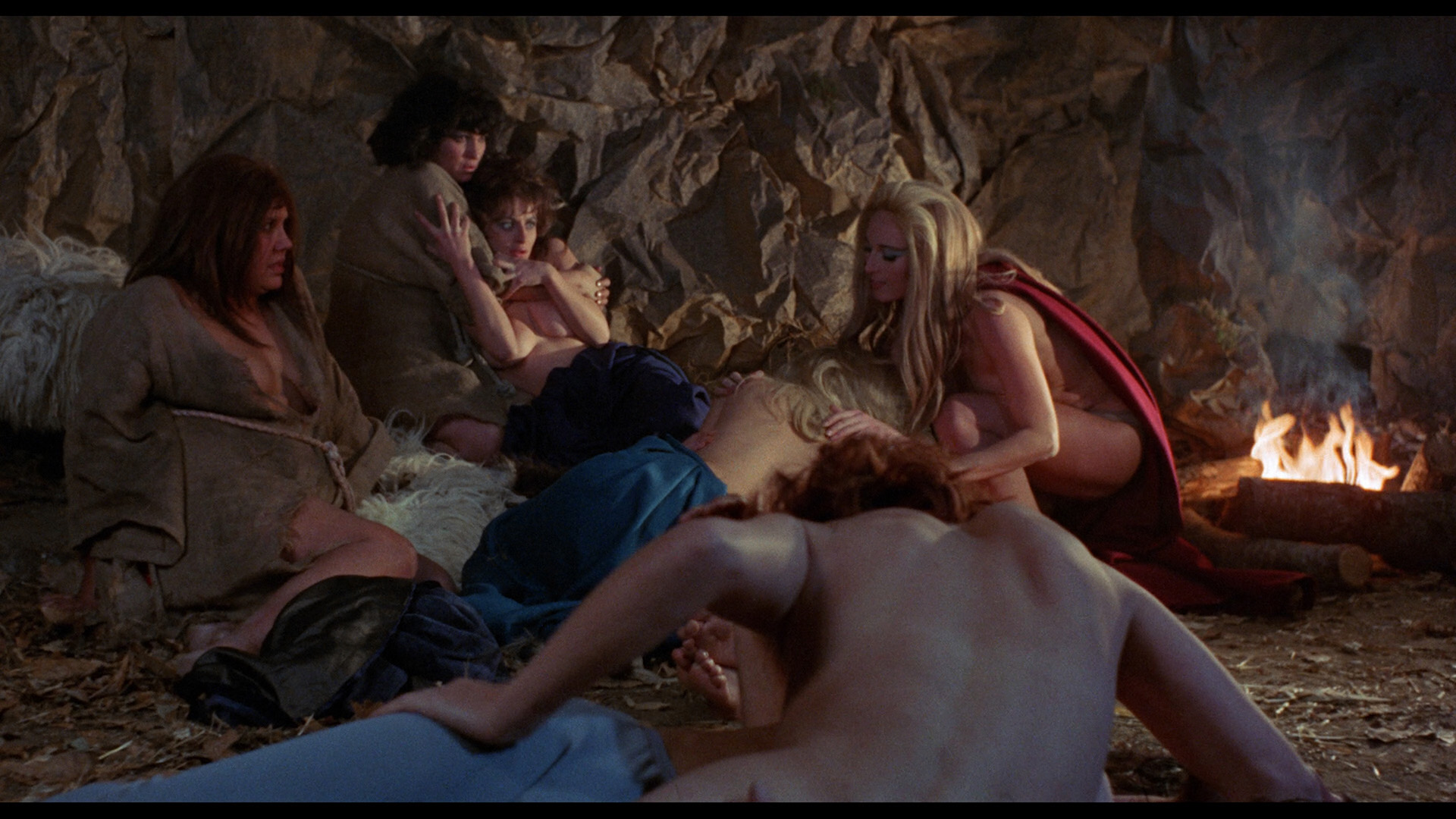 for dinner and a sleepover. Their motivations become clear soon enough when they explain that legend has it the castle is owned by the devil himself, something they aim to disprove. Cue Neri's character walking around alone after the lights go out only to plunge into a period
for dinner and a sleepover. Their motivations become clear soon enough when they explain that legend has it the castle is owned by the devil himself, something they aim to disprove. Cue Neri's character walking around alone after the lights go out only to plunge into a period 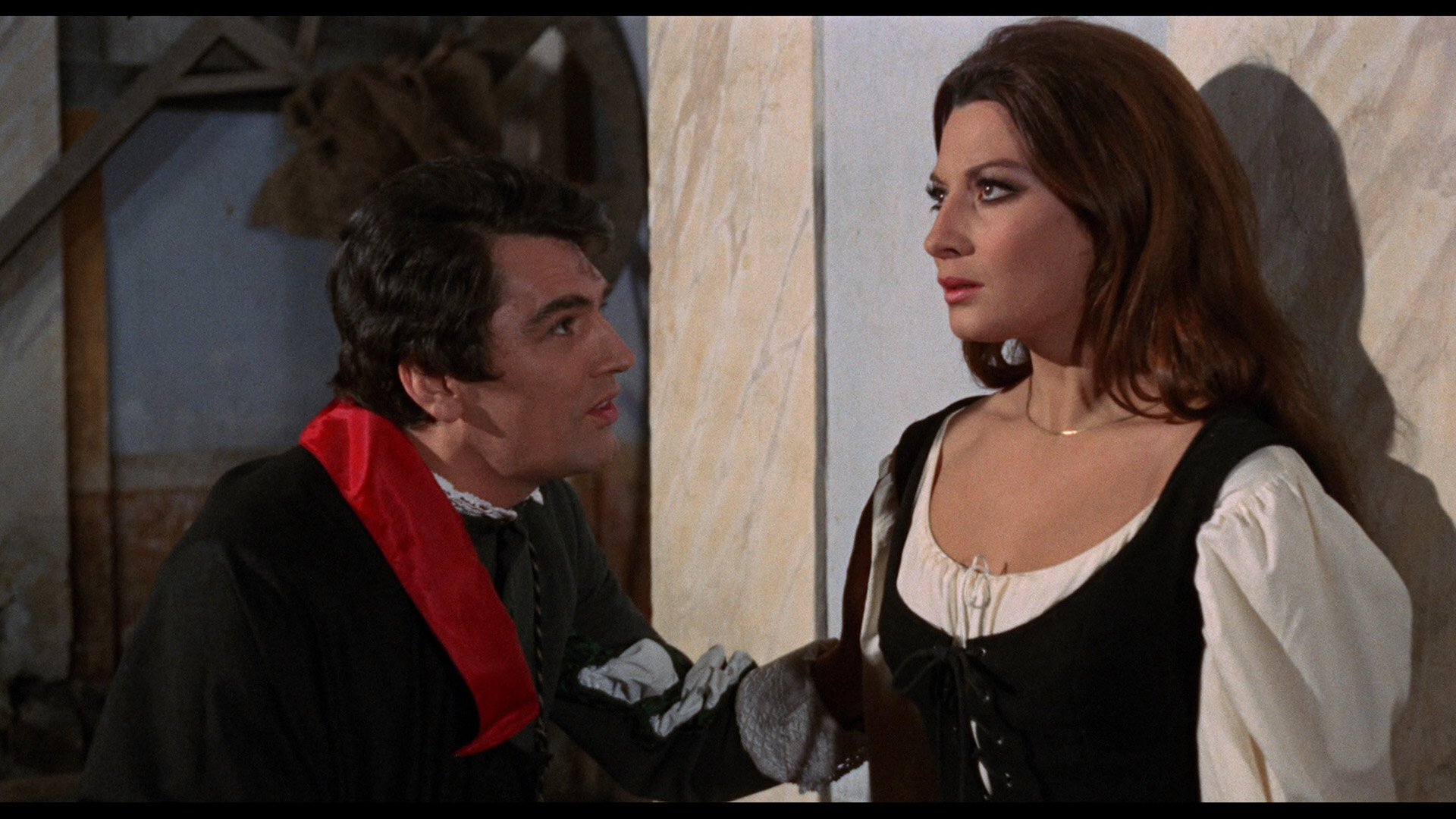 from the castle's past involving sword fights, a red-cloaked mystery figure in the woods, a love rectangle involving spaghetti western star Robert Woods, and various witchcraft accusations involving Neri's character, now named Helga, and her attempts to thwart a random curse involving a wedding dress. Given the involvement of producer Dick Randall (Pieces, Don't Open Till Christmas), it isn't too surprising to see actor Edmund Purdom turning up in the final stretch as... well, take a look at the title.
from the castle's past involving sword fights, a red-cloaked mystery figure in the woods, a love rectangle involving spaghetti western star Robert Woods, and various witchcraft accusations involving Neri's character, now named Helga, and her attempts to thwart a random curse involving a wedding dress. Given the involvement of producer Dick Randall (Pieces, Don't Open Till Christmas), it isn't too surprising to see actor Edmund Purdom turning up in the final stretch as... well, take a look at the title.  involved in bringing it up to feature length (more or less). Luckily the Severin release presents this on its best behavior with a stunning 2K
involved in bringing it up to feature length (more or less). Luckily the Severin release presents this on its best behavior with a stunning 2K 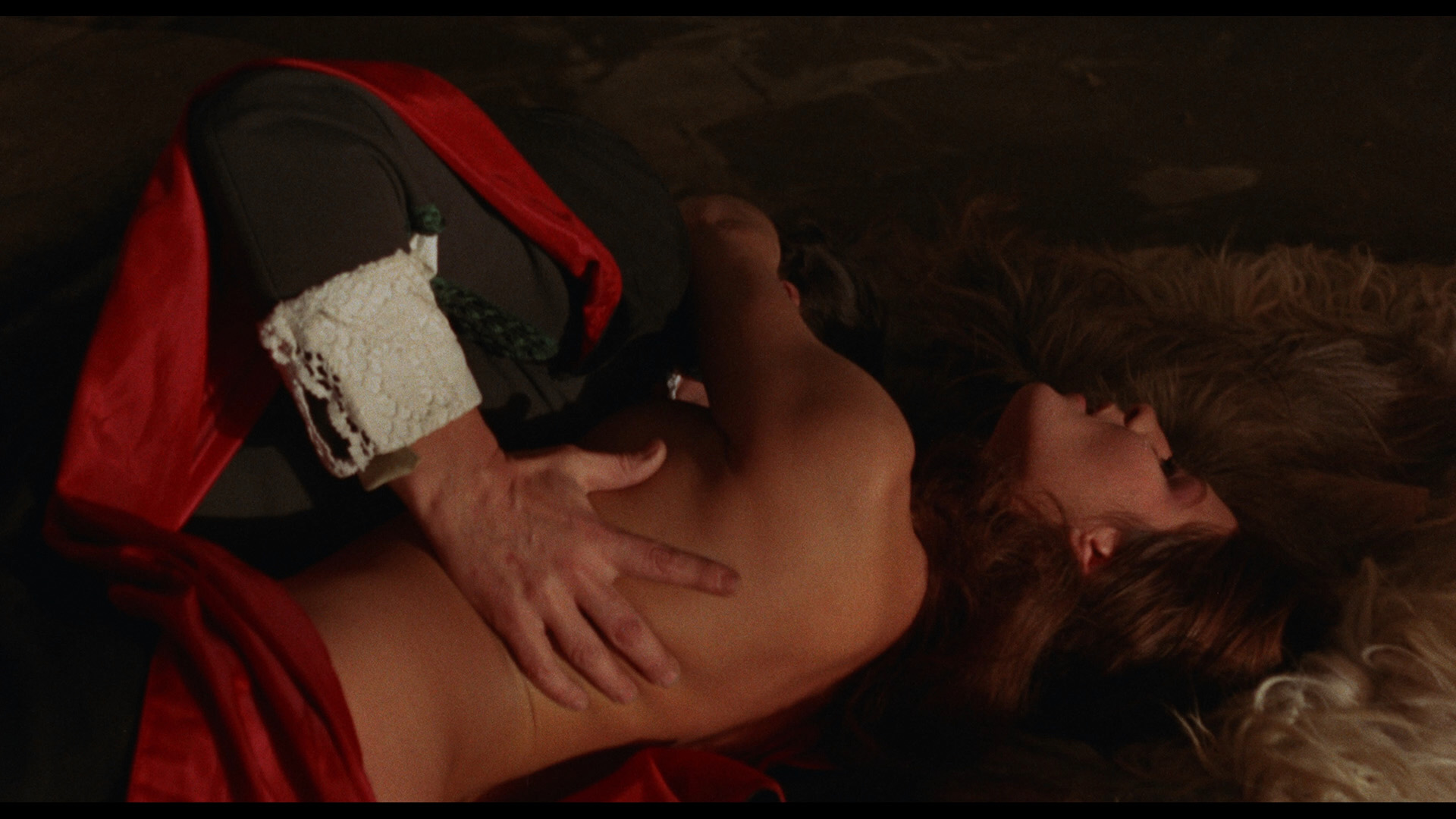 restoration from the camera negative that makes this far more pleasant to sit through than the terrible prior versions; the colors and detail here are remarkable with some reds and greens that will make you gasp. The DTS-HD MA 2.0 Italian track is also perfect and features optional English subtitles. (Apparently an English dub was never prepared, and this was barely exported anywhere at the time.) This is also the slightly longer version never seen before on home video, restoring a little bit of extra nudity and writhing during the orgy scene. A new audio commentary by Annie Rose Malamet works up a lot of enthusiasm for this film with comments about Neri's star presence, the subversive aspects of female sexuality in genre cinema, the red color coding in the costumes, and those unmistakable Rollin-esque touches, among other topics. The video essay "Lady Of The Night: The Feminism Of Rosalba Neri" (16m44s) by Alexandra Heller-Nicholas features pretty much every shred of screen nudity Neri ever did while running through the actress' work in Slaughter Hotel, Amuck, Lady Frankenstein, The Devi's Wedding Night, and this film. Finally in "Out Of The Woods" (25m21s), Woods covers the various phases of his acting career including his work as a dubber, his theater roles, his early break in Otto Preminger's The Cardinal, and his move to Italian westerns that led to a prolific career in Euro projects like this one.
restoration from the camera negative that makes this far more pleasant to sit through than the terrible prior versions; the colors and detail here are remarkable with some reds and greens that will make you gasp. The DTS-HD MA 2.0 Italian track is also perfect and features optional English subtitles. (Apparently an English dub was never prepared, and this was barely exported anywhere at the time.) This is also the slightly longer version never seen before on home video, restoring a little bit of extra nudity and writhing during the orgy scene. A new audio commentary by Annie Rose Malamet works up a lot of enthusiasm for this film with comments about Neri's star presence, the subversive aspects of female sexuality in genre cinema, the red color coding in the costumes, and those unmistakable Rollin-esque touches, among other topics. The video essay "Lady Of The Night: The Feminism Of Rosalba Neri" (16m44s) by Alexandra Heller-Nicholas features pretty much every shred of screen nudity Neri ever did while running through the actress' work in Slaughter Hotel, Amuck, Lady Frankenstein, The Devi's Wedding Night, and this film. Finally in "Out Of The Woods" (25m21s), Woods covers the various phases of his acting career including his work as a dubber, his theater roles, his early break in Otto Preminger's The Cardinal, and his move to Italian westerns that led to a prolific career in Euro projects like this one.CASTLE OF BLOOD: Severin (UHD)
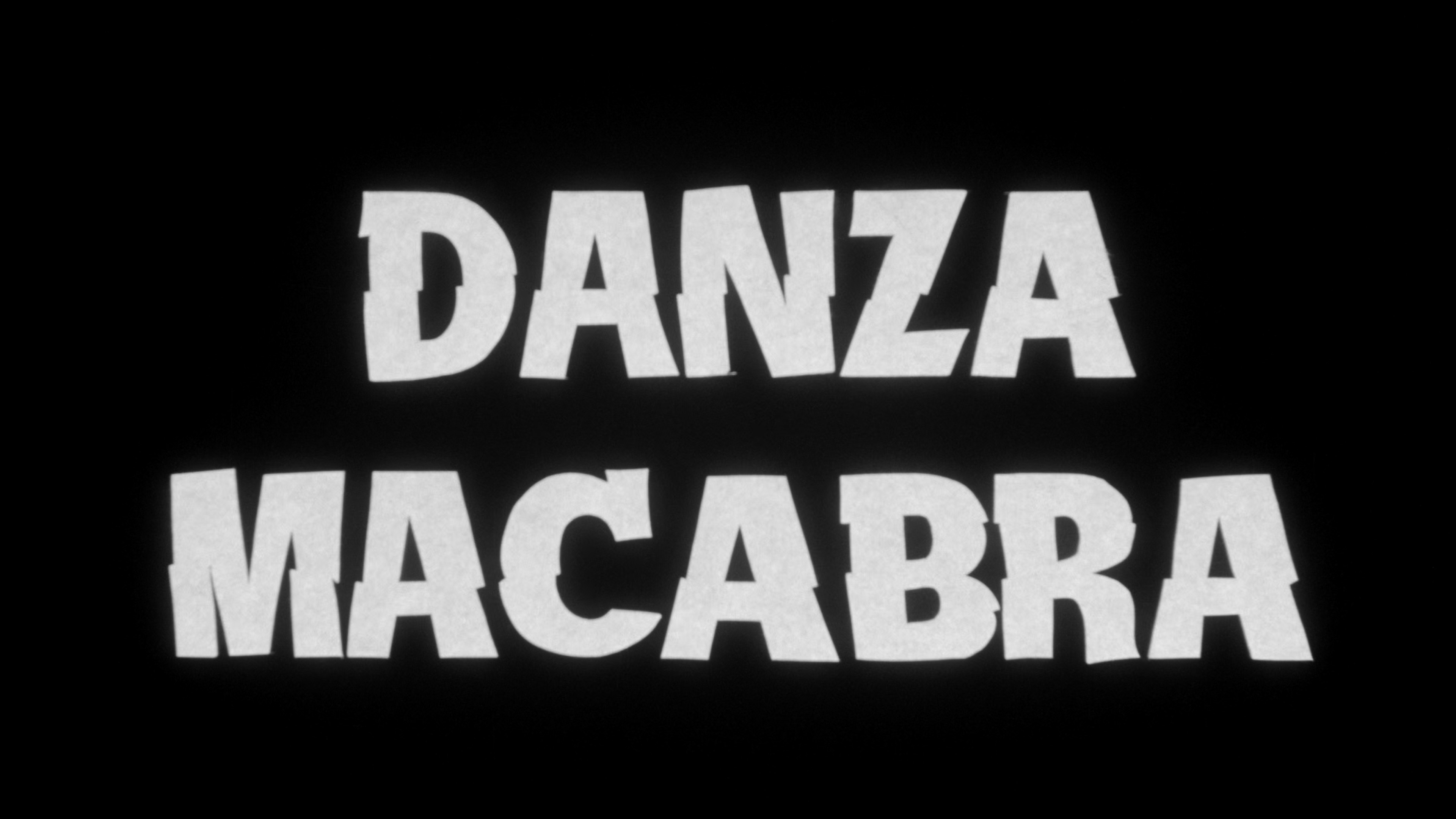
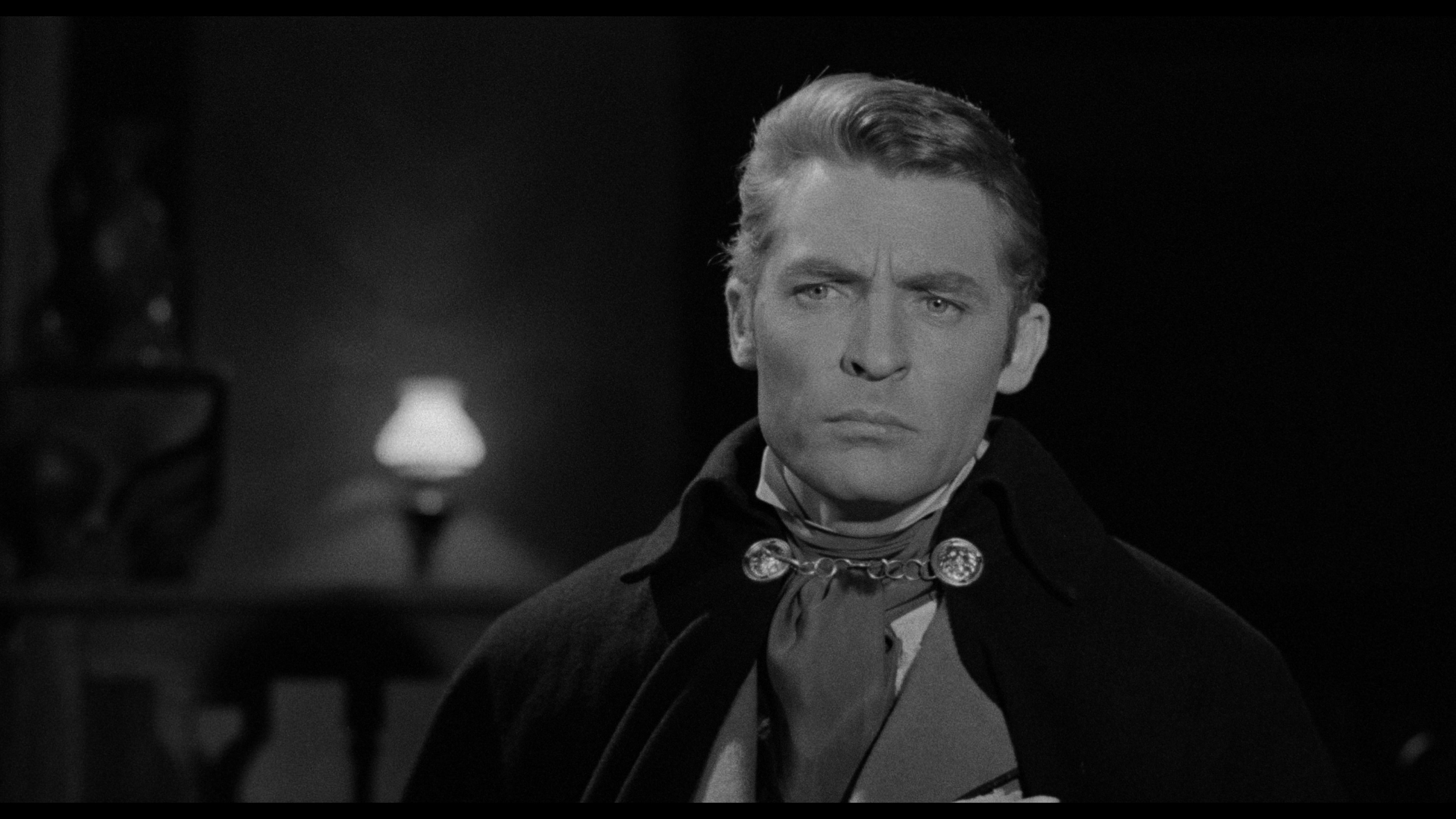
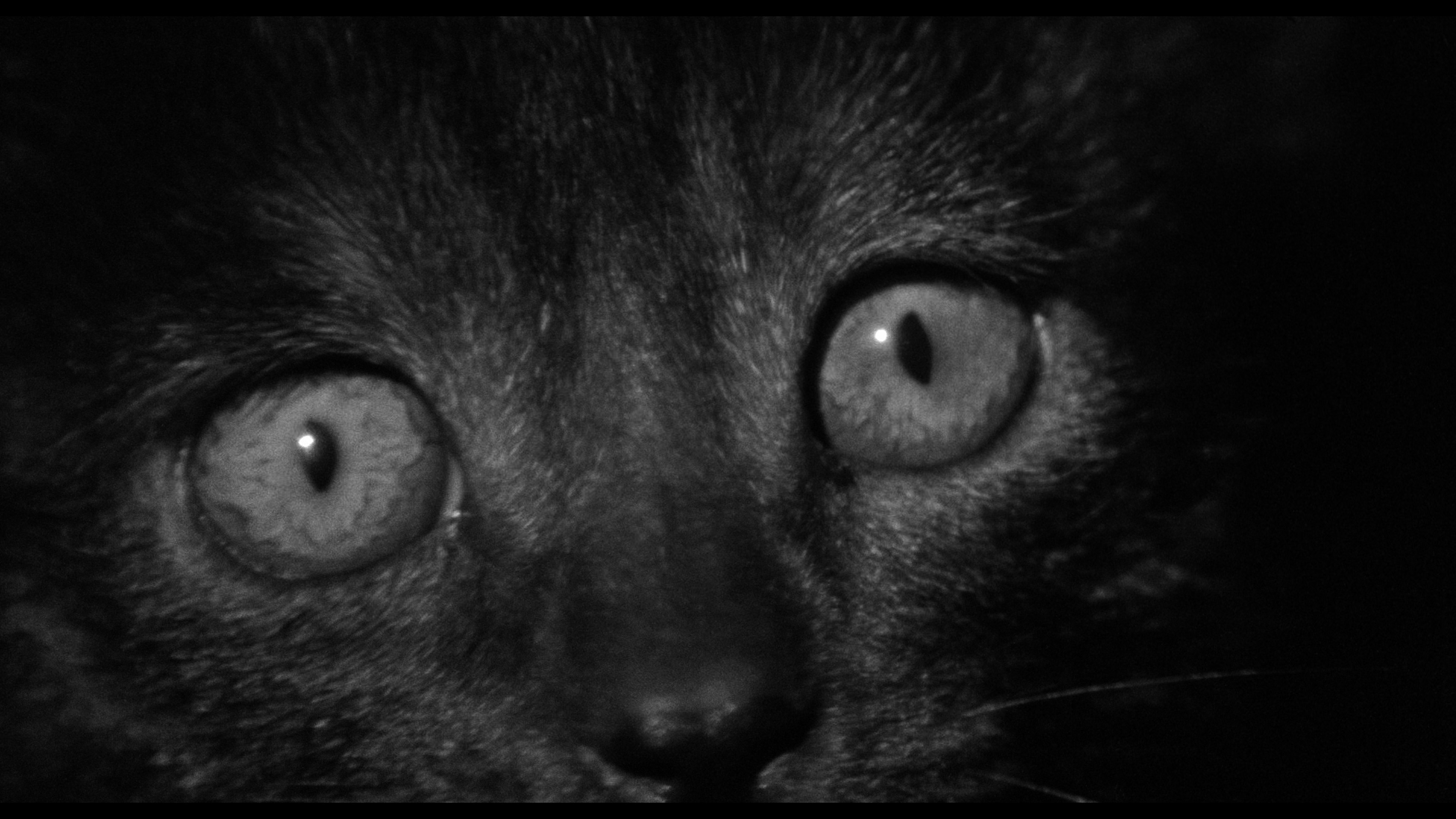
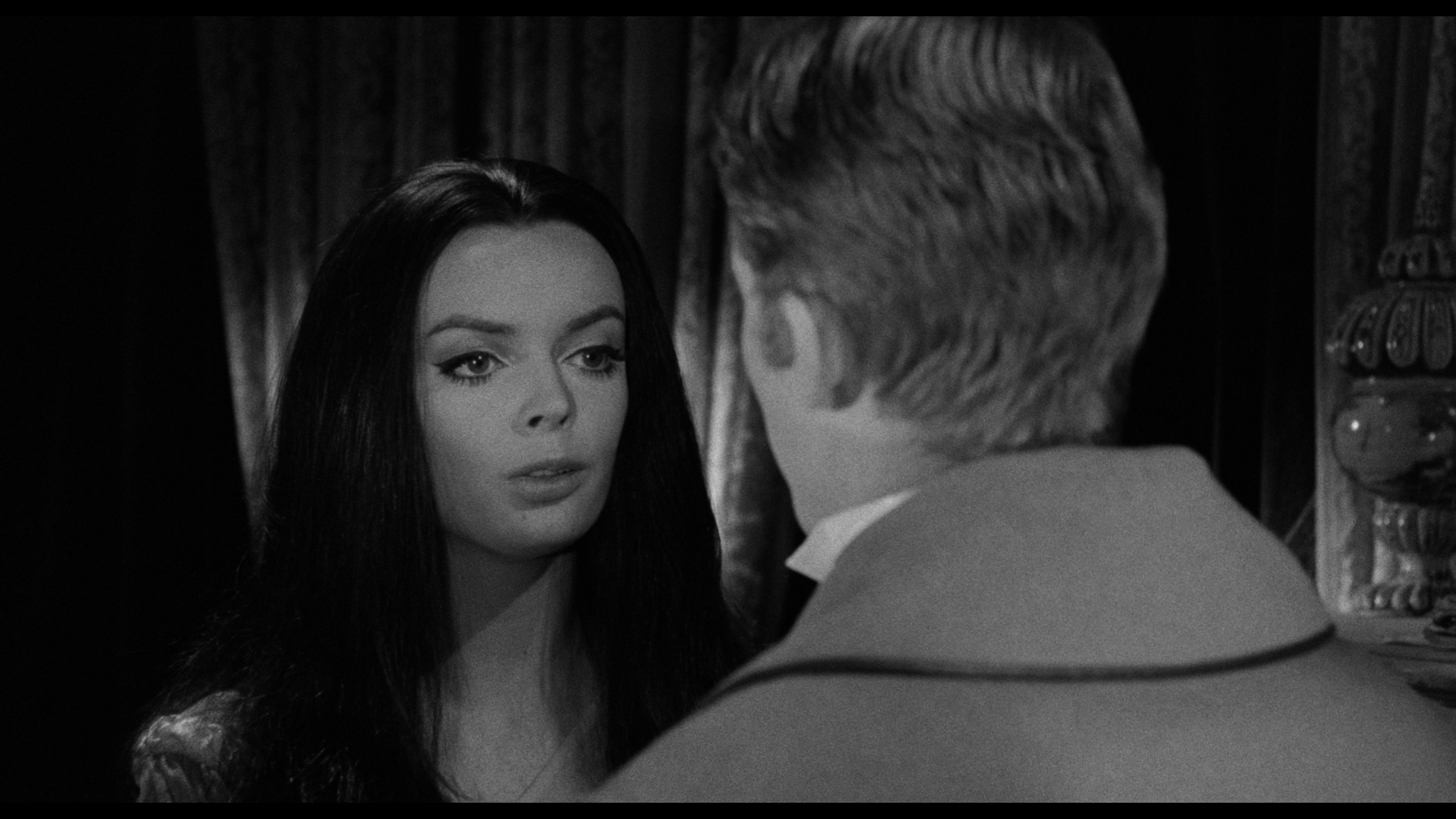
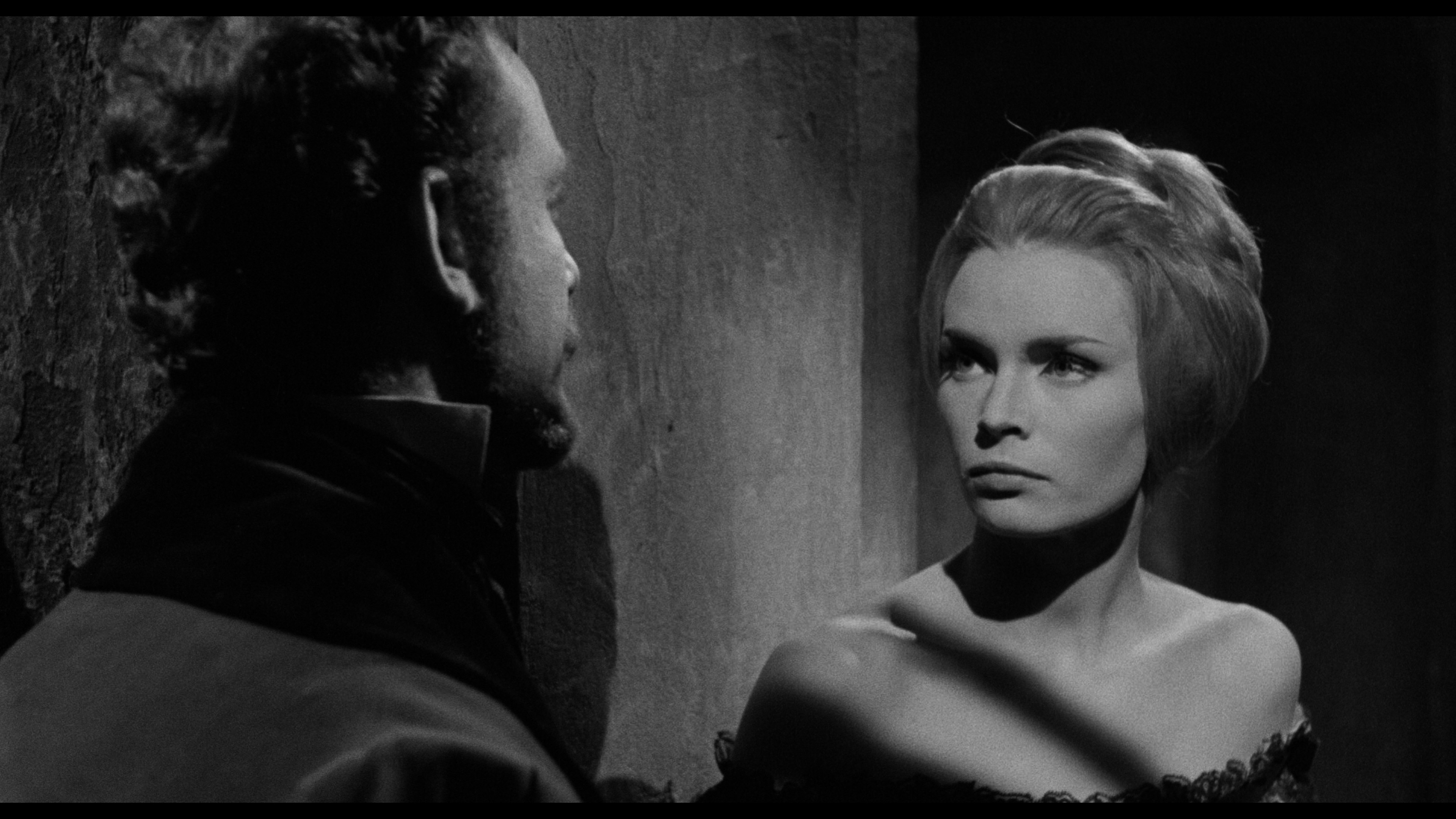
CASTLE OF BLOOD: SevenSept (DVD)
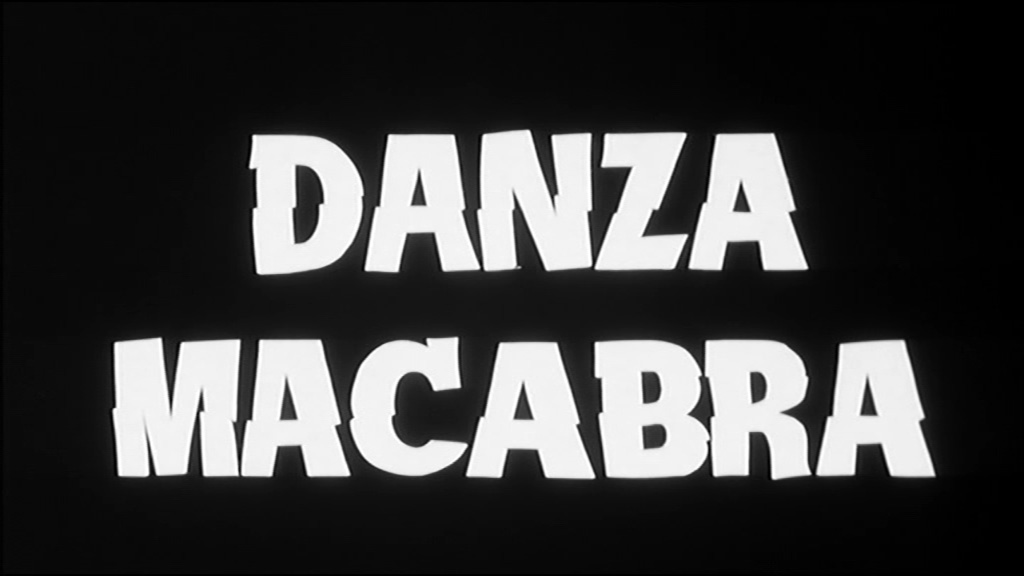
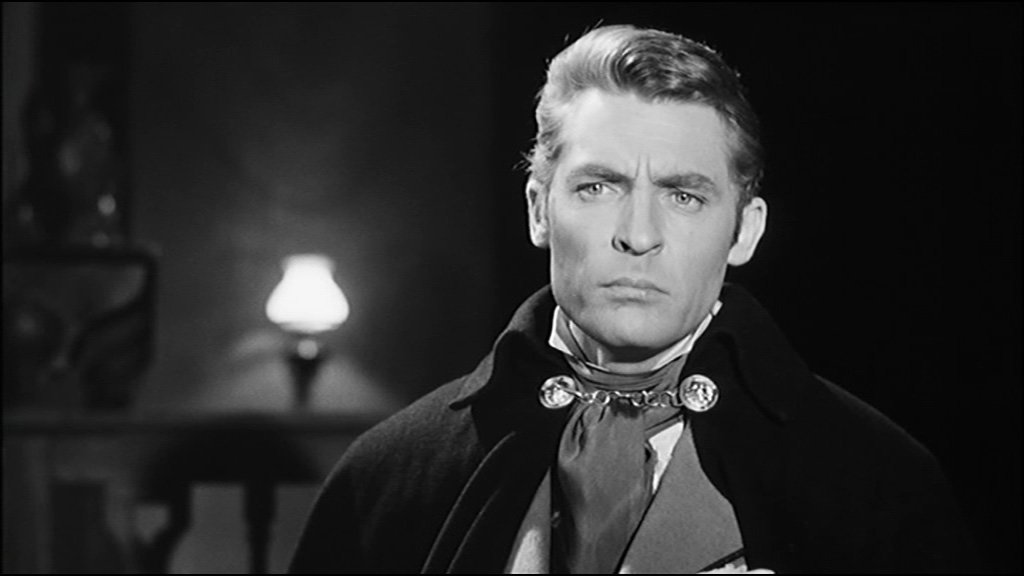
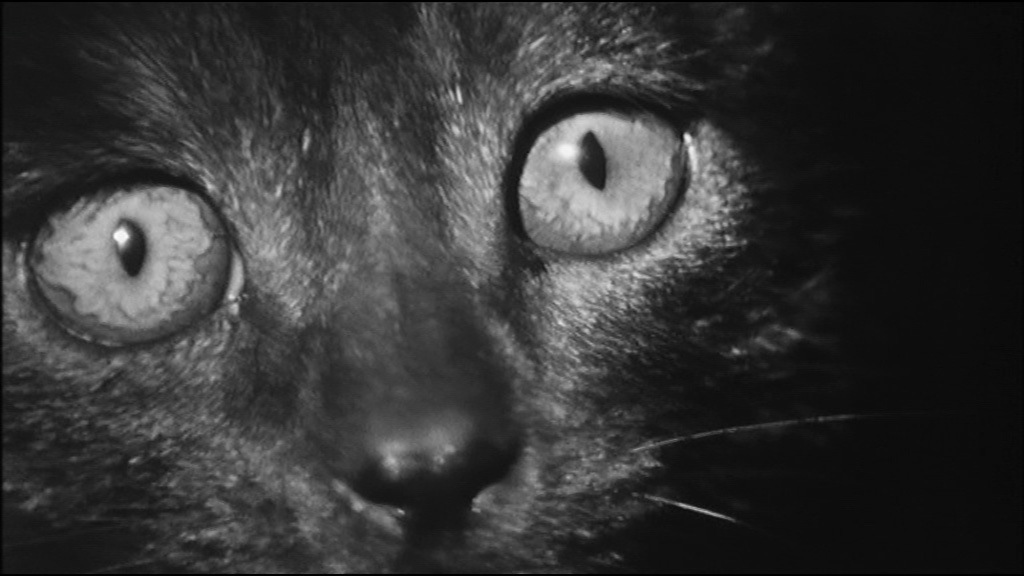
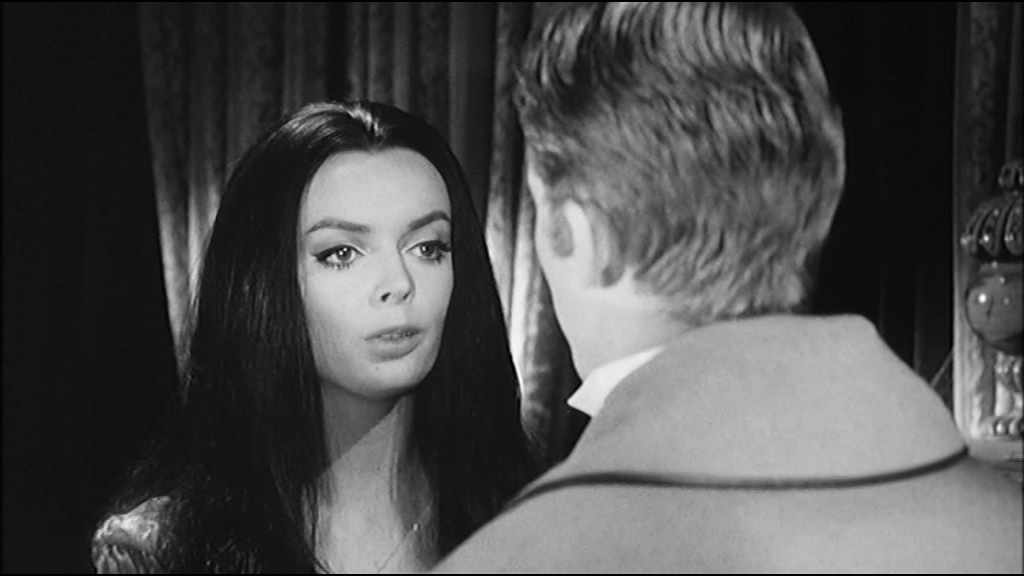
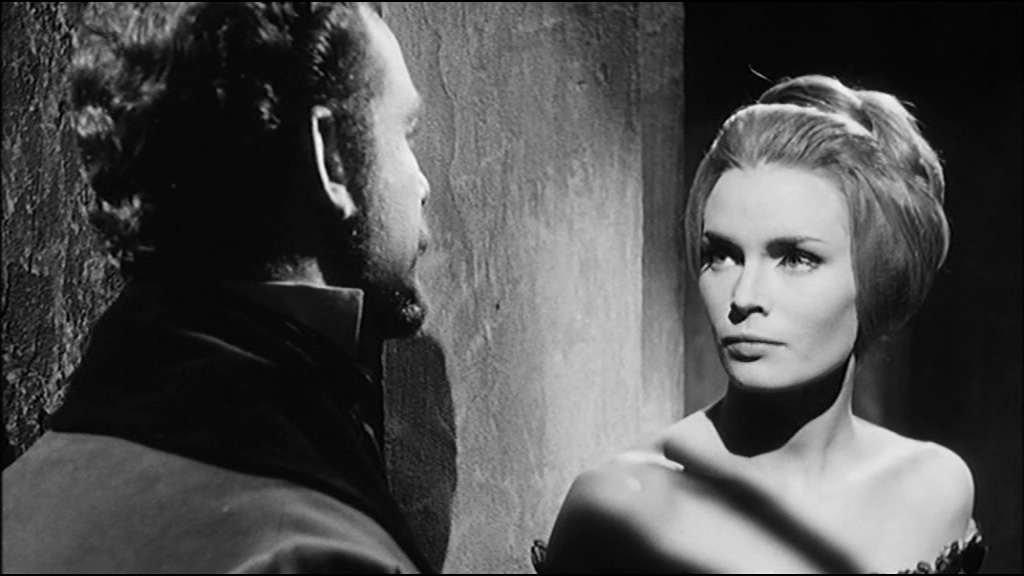
CASTLE OF BLOOD: Severin (2015 Blu-ray)
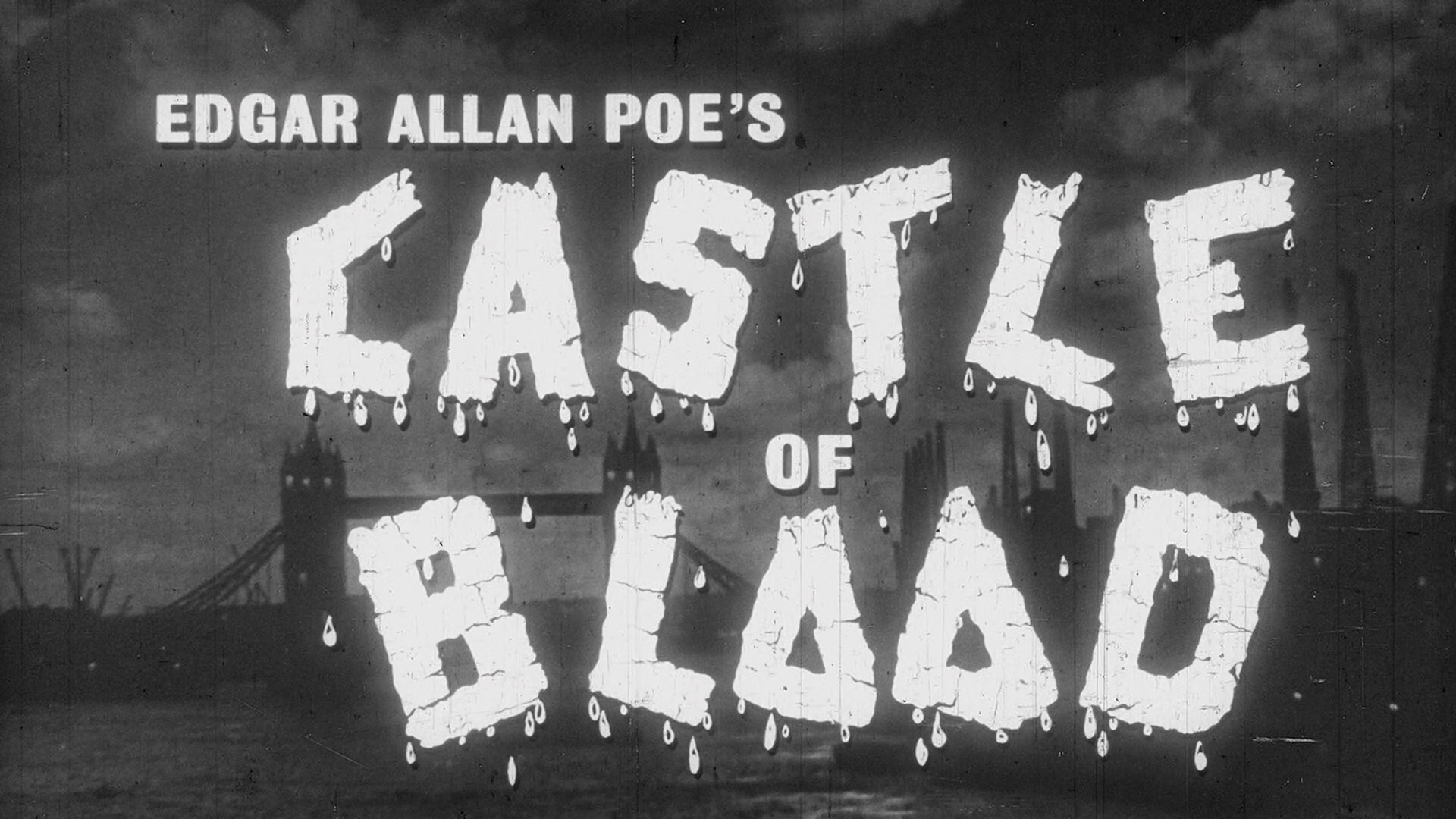
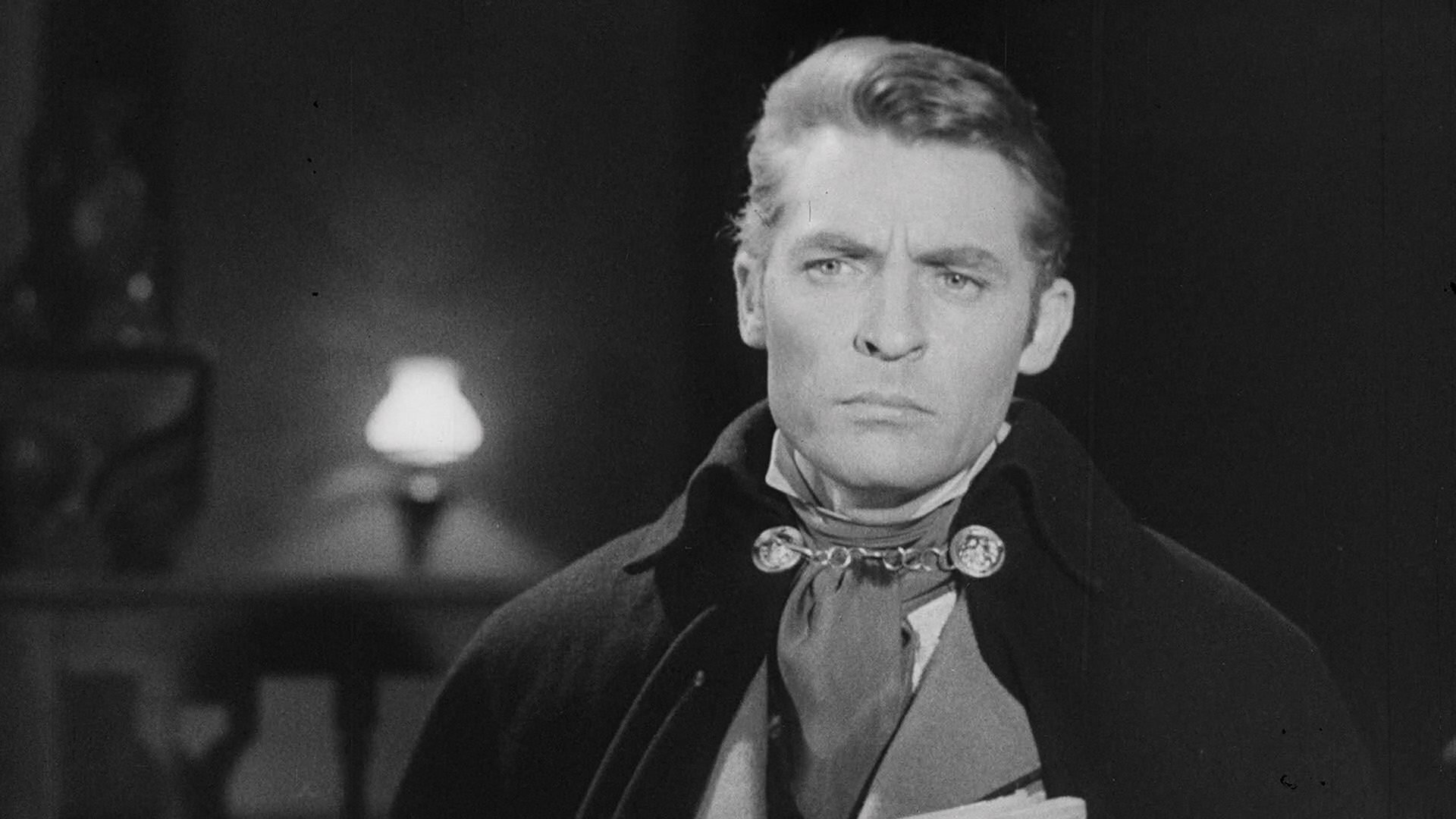
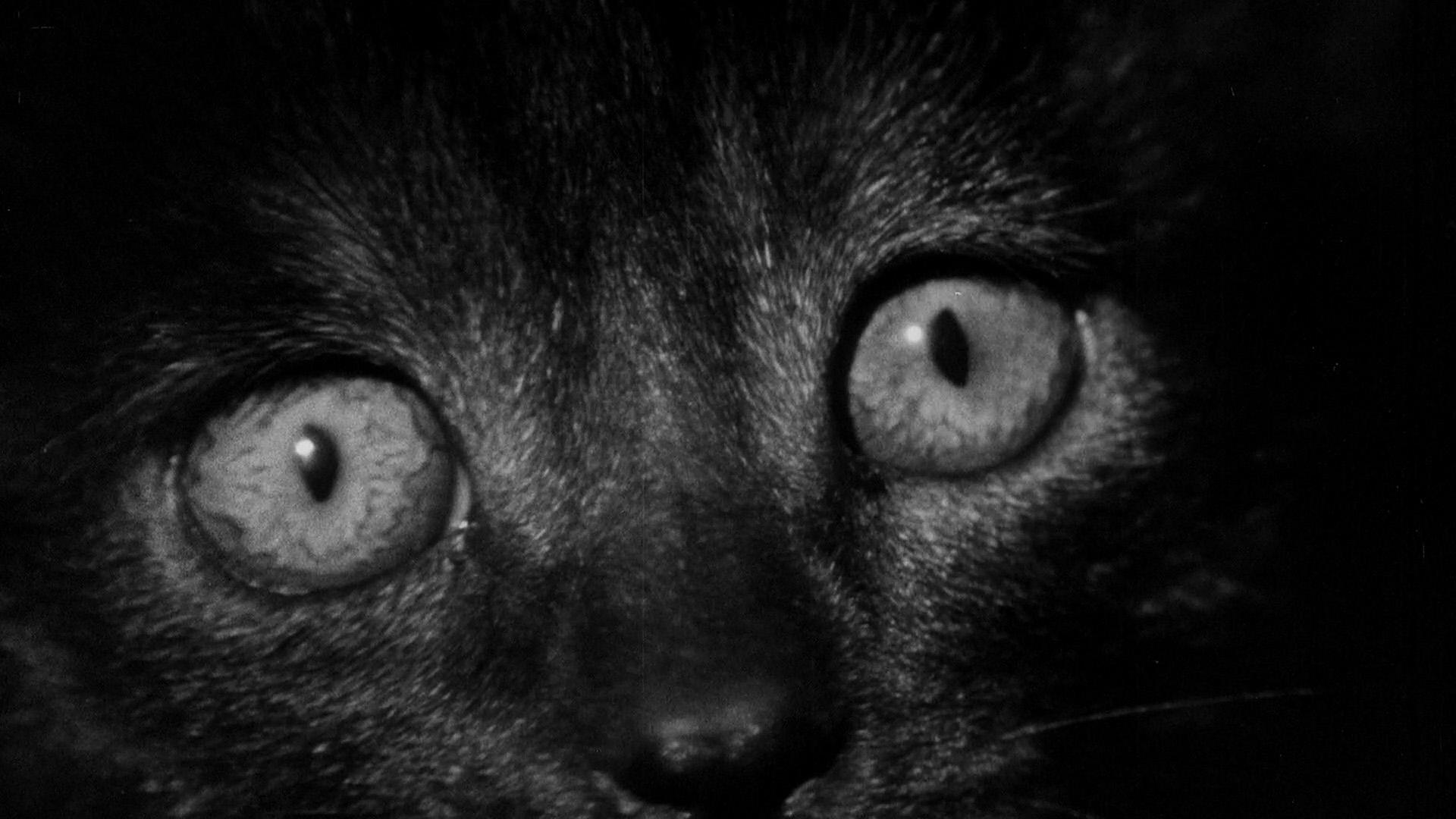
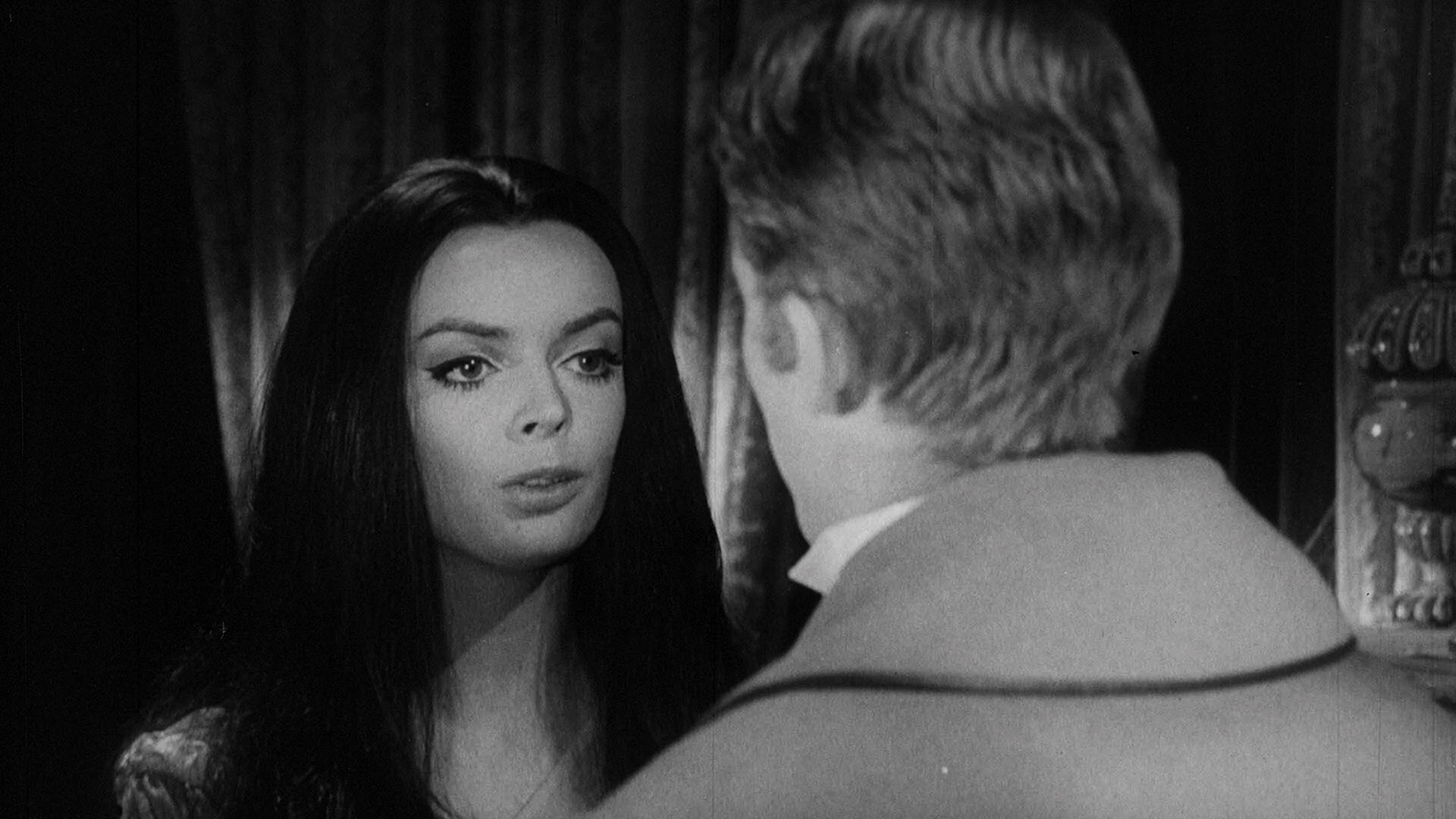
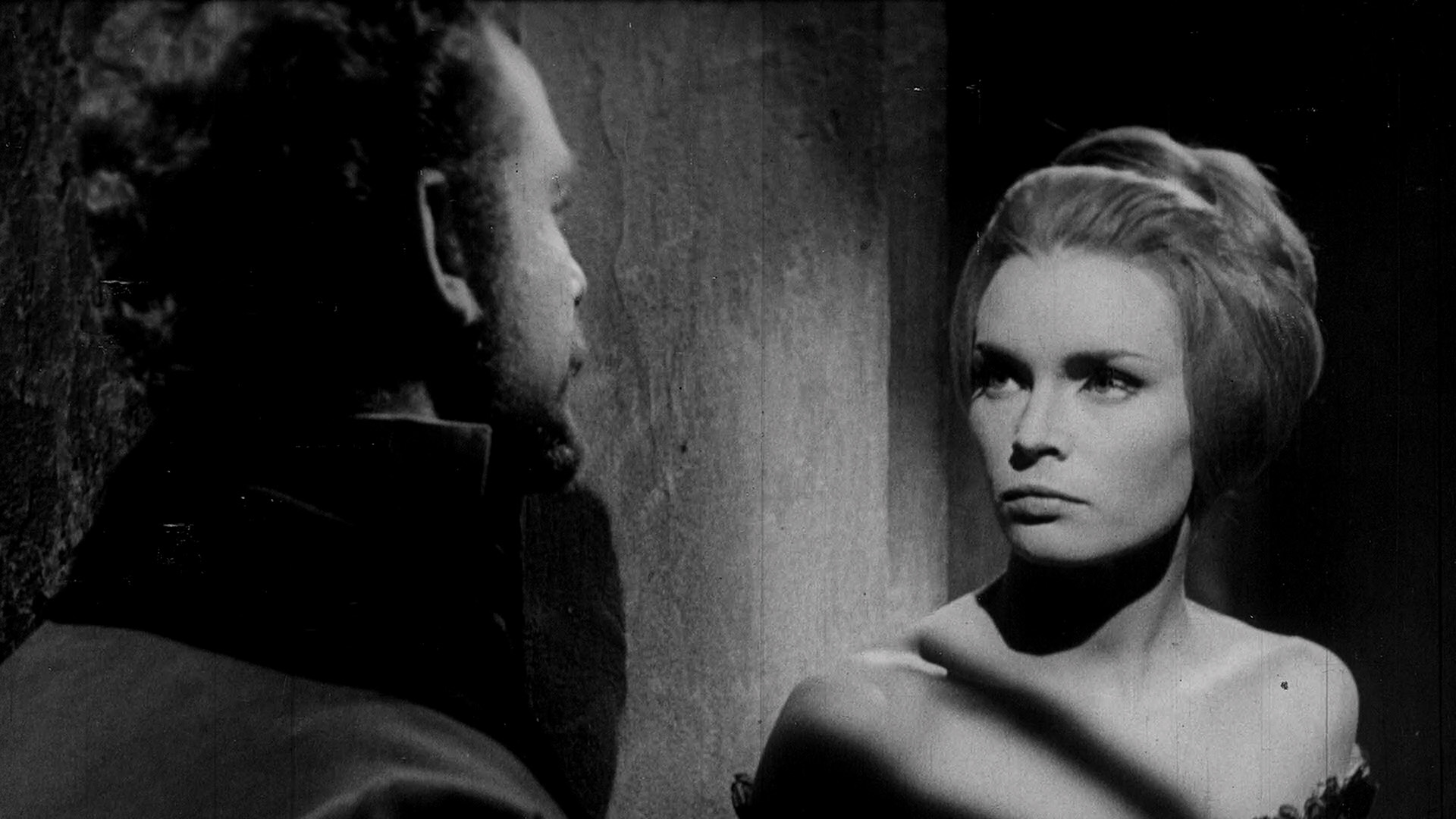
CASTLE OF BLOOD: Synapse (DVD)
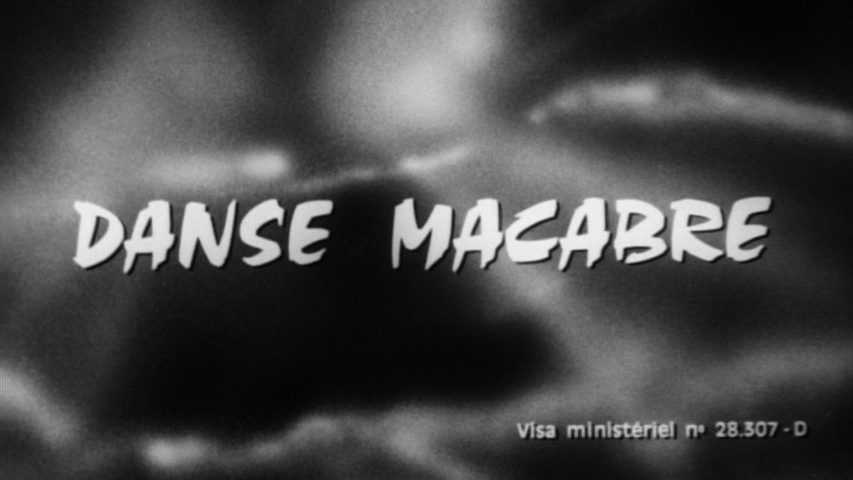
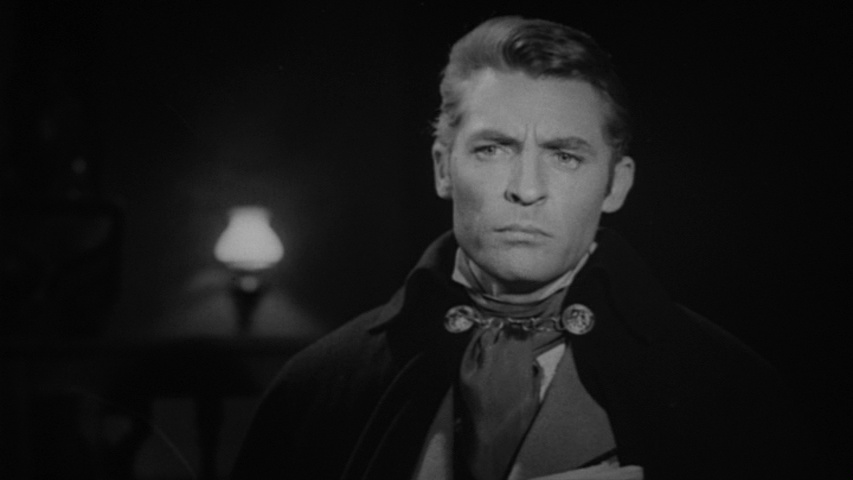
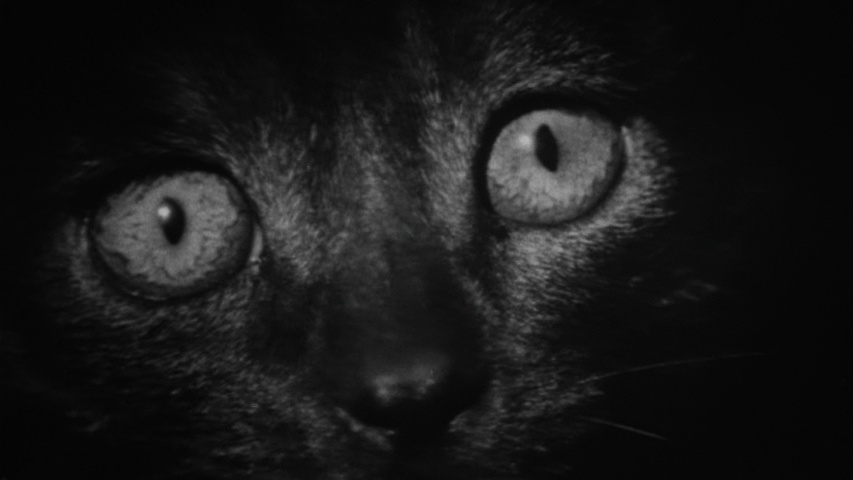
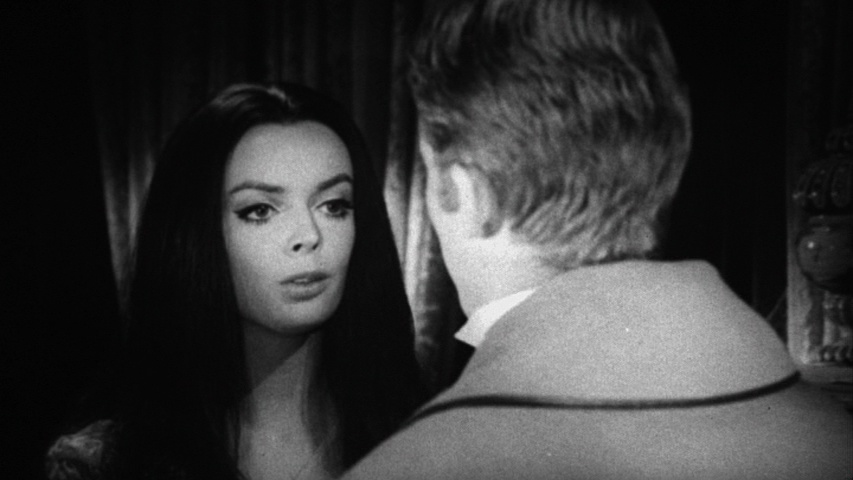
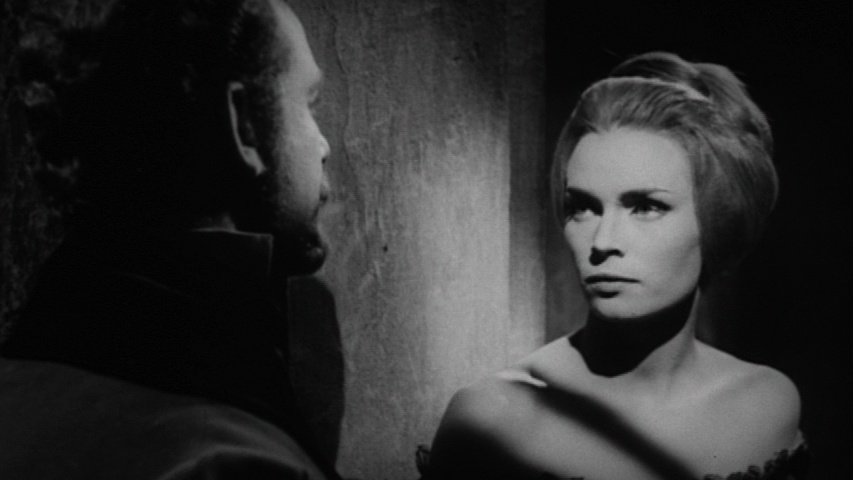
![]()